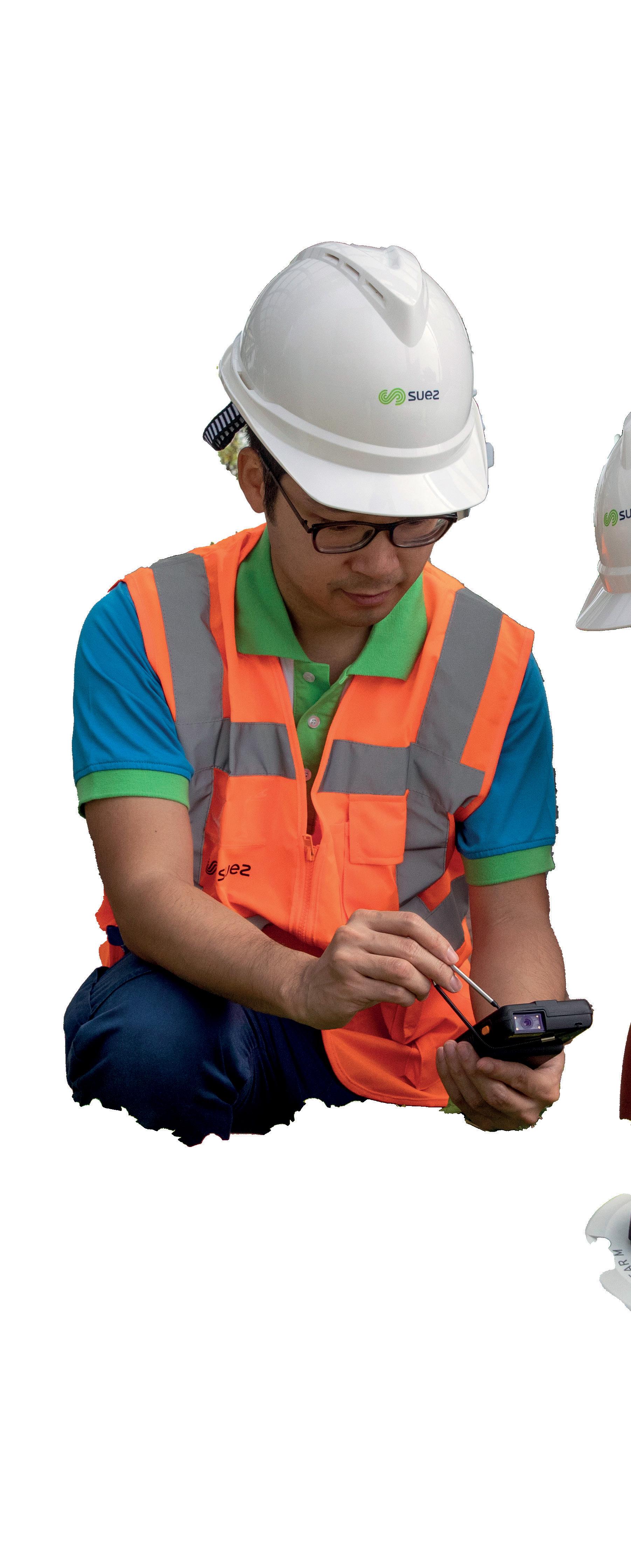














Published by
Monkey Media Enterprises
ABN: 36 426 734 954
C/- The Commons, 36–38 Gipps St Collingwood VIC 3066

P: (03) 9988 4950 monkeymedia.com.au info@monkeymedia.com.au councilmagazine.com.au news@councilmagazine.com.au
Editor
April Shepherd
Assistant Editor
Stephanie Nestor
Journalists
Tess Macallan, Steph Barker, Kody Cook, Yasmin Isaacs
National Media Executives
Rima Munafo, Brett Thompson, Ryan Sheehan
Design Manager
Alejandro Molano
Senior Designer
Luke Martin
Designers
Danielle Harris, Ozlem Munur, Jacqueline Buckmaster
Marketing Manager
Radhika Sud
Marketing Associates
James Holgate, Natalie Ta, Rhys Dawes
Digital Marketing Assistants
Bella Predika, Emily Gray
Publisher
Chris Bland
Managing Editor
Laura Harvey
ISSN: 2653-2670
Spring has sprung, leaving a cold winter behind and bringing with it new projects, ideas and innovations in the sector. As many of our regular readers know, each issue is usually tied together by a theme. Now, sometimes these themes come to me, and sometimes I plan them months (or days!) from our print date.
For this issue I waited patiently for inspiration to strike, before noticing a pattern throughout all of our pieces – the sector’s eagerness to partner and build a better future that meets community needs – and I knew I had found not one, but multiple focuses for this issue.
From involving youth in council decision-making and creating green spaces for future generations, to using council-owned land to propose suitable ways to reuse waste, this issue showcases the cutting-edge ideas that councils are making positive change through boots-on-the-ground community work.
This is exemplified on our cover showcasing the picturesque Gunnedah region, and in their eye-opening feature on the extent the rural region is going to reduce crime, domestic violence and boost community safety.
We also were lucky enough to speak to Young Mayors Program Director, Tahlia Azaria, about the benefits of having the fresh perspective of younger generations in local government, and how this can build positive change.
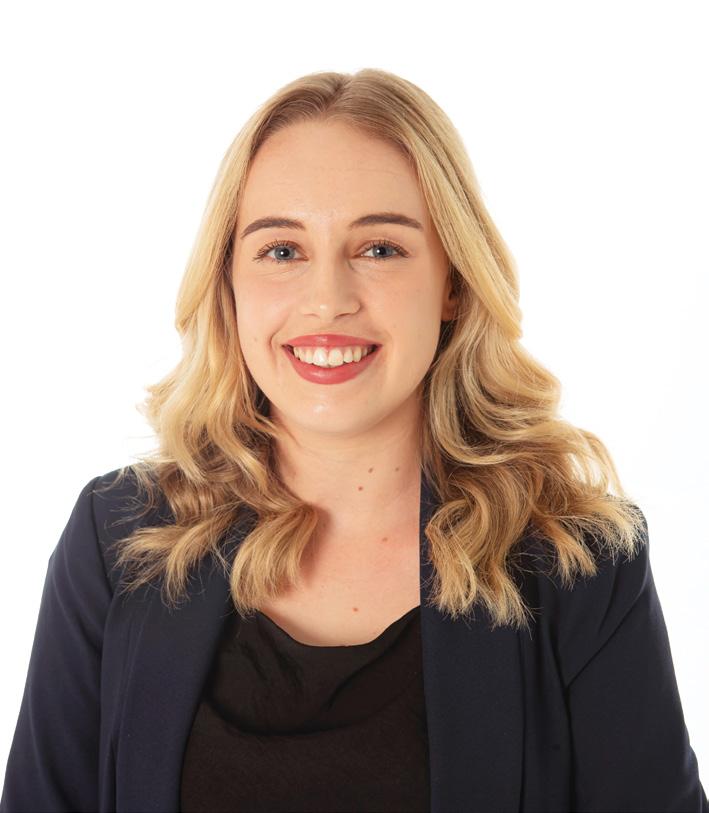
Reducing emissions and tackling the housing crisis are two key goals that many in the sector have quickly realised will not be achieved without teamwork. This edition highlights this through City of Casey’s circular economy living lab, which is joining community needs with council resources; City of Burnside’s avid quest to protect and build greenery despite community vandalism; an intriguing op-ed from Mount Alexander Shire Council Mayor, Rosie Annear, discussing the collaboration efforts her Council has implemented; and many more.
As always, thank you for reading, and please reach out if you have any questions, tips or just want to chat – my digital door is always open.
April Shepherd Editor12
OPINION: PLANNING REFORM NEEDED, LET’S GET IT RIGHT
Major planning reform is coming, and Victorian councils not only understand this, they are also embracing it.

16 DIGGING DEEP INTO THE DATA: MAKING REAL CHANGE
SMART CITIES
20 IS THE PARKING METER DEAD?
22 TOWNSVILLE PUTS SUSTAINABLE SENSORS TO THE TEST


Australia’s climate is rapidly changing, giving rise to a significant amount of uncertainty among communities. For local governments, smart environmental monitoring technology presents an opportunity to gain deeper insights into environmental impacts. For more than a decade, the City of Townsville has been developing locally-made environmental sensors to better understand how changing weather conditions can impact the community.
26 CONCERNS AND REALITIES OF CCTV: BALANCING PRIVACY, SAFETY, AND FREEDOM

Smart cities leverage technology and data to enhance liveability, sustainability, and economic prosperity. However, some parts of the community are expressing growing concerns that the implementation of smart city initiatives could lead to an invasion of privacy, restriction of freedom and increased surveillance. Here, we explore the concerns surrounding visual surveillance technologies, including Closed-Circuit Television (CCTV) and the delicate balance between privacy, safety, and freedom.
WATER MANAGEMENT
28 INNOVATIVE SOLUTIONS FOR HOLISTIC WATER MANAGEMENT
30

24 WORKING WITH PREFERRED SUPPLIERS 36
EUREKA! AWARD-NOMINATED RESEARCH IMPROVES WATER ON THE CENTRAL COAST
After a decade of poor quality, the water of Terrigal beach has improved thanks to an investigation into coastal water pollution, earning the attention of Australia’s scientific community. Implementing innovative technology and partnering with scientists, Central Coast Council has contributed vital research to help understand what causes water contamination and possible remedies.

50
For more than a decade, the City of Melville has been working with Whadjuk Traditional Owners and Elders, and the community, to develop a plan to revitalise the Goolugatup Lowerlands. The City recently held a public program that showcased project designs and illustrated how input from Indigenous communities can play a pivotal role in guiding the maintenance and design of public spaces, supporting the preservation of culture, history and the environment.
01 EDITOR’S WELCOME
04 A WORD FROM THE AUSTRALIAN LOCAL GOVERNMENT ASSOCIATION
72 ADVERTISERS’ INDEX
72 EDITORIAL SCHEDULE
MAPPING A NEW WAY TO PROTECT NATIVE ECOSYSTEMS
In an innovative trial, Sunshine Coast Council is testing the capabilities of mapping and AI technology as part of environmental conservation efforts to tackle the spread of invasive plants along the coastline. With the trial still underway, Council is navigating constraints and encountering discoveries, which hopefully promise a new way to understand how to protect native ecosystems.
06 COUNCILS REACT TO CANCELLED COMMONWEALTH GAMES
07 QLD COUNCIL UPDATES FLOOD MAPPING
08 LGPRO WELCOMES IBAC’S CALLS FOR ANTI-CORRUPTION REFORM
09 $500M HOUSING PROGRAM TO SUPPORT COUNCILS
10 JEMENA’S NEW RENEWABLE GAS VENTURE
11 TAS COUNCIL RESPONDS TO KANGAROO BAY MAJOR PROJECT SUBMISSION
COUNCIL IN FOCUS
68 GUNNEDAH SHIRE COUNCIL TAKES ON REGIONAL CRIME
This edition, we focus on the Shire of Gunnedah in north-west New South Wales and their determination to address increasing crime in regional areas.

In a major advocacy win for local government, the Federal Government recently announced a new $500 million Housing Support Program, available to local and state governments, to help address the affordable housing crisis.
Unveiled at National Cabinet last month, this new program will help Australia’s 537 local governments build parks, footpaths, roads, sporting grounds and other local infrastructure which is essential for our communities.
ALGA has been advocating for this support because we know that we can’t simply fix Australia’s worsening housing crisis by just building more homes.
We must work collaboratively across all levels of government to invest in the social amenities and local infrastructure necessary for creating strong, healthy and liveable communities.
So we were delighted that the government heard our call and responded with funding that will enable affordable new housing developments in our cities, towns and regions.
It was also fantastic to see increased support for built environmental professionals, including local government town planners, included in the planning reforms announced by National Cabinet.
Our research shows there's a severe shortage of skilled planners in local government, and that we need this increased investment to facilitate streamlined housing approvals and strategic planning to identify new growth areas.
Of course, there’s a lot more councils can do to help solve the affordable housing crisis with the right support and regulations in place.
That’s why ALGA is excited to be involved with the Planning Ministers Meetings, working with this influential group – as well as key stakeholders and other peak bodies – to develop and implement sensible reforms.
Through these meetings, we are reinforcing the importance of local communities continuing to have a say in development in their local areas. We firmly believe that you get much better housing outcomes when decisions are made locally.
Some areas have unique qualities and topography that need special planning considerations, with development assessments that are best undertaken by local government.
Across the country, we are seeing a movement to remove local government planning powers, but there’s no evidence to show that this will deliver more housing, or housing that is more affordable.
As a signatory to the National Housing Accord, ALGA is fully committed to working collaboratively with state and federal governments on housing and planning reforms that will deliver more affordable housing for all Australians.


We’re also continuing to call for Financial Assistance Grants to be restored to at least one per cent of commonwealth taxation revenue to help us invest in building safer, stronger and healthier communities, in a financially sustainable way.
Finally, I want to say a sincere thank you to the mayors, shire presidents, councillors, CEOs, general managers, and local government staff, who travelled to Canberra to attend our 2023 National Local Roads, Transport and Infrastructure Congress earlier this month.
The ideas and innovations shared at this event were vital for local governments who collectively manage around $500 billion worth of infrastructure for our communities.
It was also great to hear and engage with Federal Ministers and key decision-makers as well as a range of experts in renewable energy, waste and recycling, active transport, road safety and freight, housing, and telecommunications.
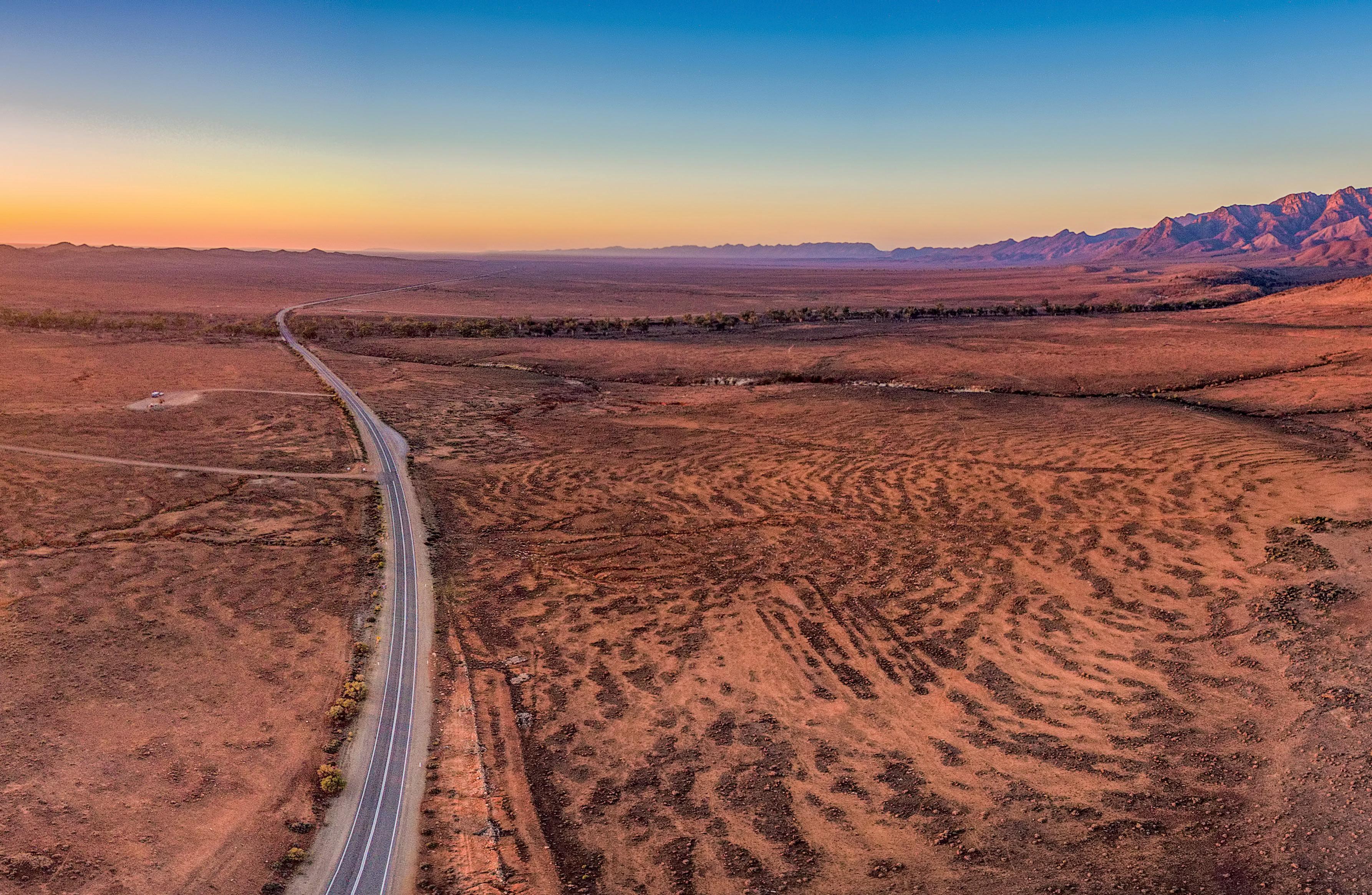
Victorian Premier, Daniel Andrews, announced in July that Victoria will not be hosting the 2026 Commonwealth Games due to costs expanding far beyond the original estimated $2.6 billion budget for the 12-day sporting event, leaving many regional councils disappointed.
The event – which was to be held in three years' time throughout regional Victoria – was set to not only provide a huge economic boost for the area’s regional councils, but be the catalyst for much-needed infrastructure construction for these communities.
In a press conference held on 18 July, Mr Andrews said that when the Victorian Government was approached in 2022 to host the Commonwealth Games it was happy to help out, provided that the event delivered lasting benefits to the state.
"What's become clear is that the cost of hosting these Games in 2026 is not the $2.6 billion which was budgeted and allocated," Mr Andrews said.
Mr Andrews said the true cost was likely to be closer to $6 or $7 billion and the state simply could not afford it.
"I will not take money out of hospitals and schools to host an event that is three times the cost estimated and budgeted for last year.
"I've made a lot of difficult calls, a lot of very difficult decisions in this job. This is not one of them. Frankly, $7 billion for a sporting event, we are not doing that."
Mr Andrews said that while the Games would not go ahead, the over $2 million already allocated to the event will instead go toward a regional package that includes lasting infrastructure that the Games were set to provide.
"We will instead deliver all and more of the legacy benefits in housing, sporting infrastructure, tourism,” Mr Andrews said.
“Each and everyone of the sporting facilities that were to be legacy benefits from the games will be built,” Mr Andrews said.
“There is a very substantial regional tourism fund, there will be a substantial package of support for community based sport, and perhaps most importantly there will be a $1 billion dollar boost for social and affordable housing right across regional Victoria, not just in those hub cities, but there will be at least 1300 new homes constructed across regional Victoria.”
When a journalist asked Mr Andrews why the Games couldn't have been held in Melbourne, rather than cancelled altogether, he responded, "We have looked at every conceivable option”.
“All of them are far in excess of the $2.6 billion that's been budgeted, so all of them represent more cost than there is benefit, and on that basis none of those options stack up and we're not going to be hosting the Games in 2026."
Greater Shepparton City Council Mayor, Shane Sali, said that to say he is disappointed is an understatement.
“The Greater Shepparton region had already begun gearing up for the 2026 Commonwealth Games and we were extremely excited to have been announced as one of the five host cities,” Mayor Sali said.

“Conversations will now take place in the coming weeks and months, with our expectation for further funding to be allocated towards the Shepparton Sports and Events Stadium upgrade. This upgrade is high on the priority list and a major project which we will continue advocating for.”
City of Greater Geelong Mayor, Trent Sullivan, said while the City is disappointed in the announcement, it understands the financial pressures that all levels of government are facing and the difficult decisions that need to be made.
“We welcome the Government’s announcement that this vital infrastructure will still be prioritised, and we’re eagerly awaiting the details of exactly what they will fund and deliver,” Mayor Sulllivan said.
City of Ballarat Mayor, Des Hudson, said that while the decision from the Victorian Government is disappointing, the City is committed to ensuring the State Government delivers on what it has committed to the community and remains optimistic about the legacy items that have been promised.
“We are reassured by the promise of a $2 billion package to be shared across regional Victoria to deliver lasting sporting and housing infrastructure.”
AQueensland Council has updated its flood mapping to help residents become better prepared for future flooding events.
Logan City Council has devised the flood map as part of its new planning scheme, Logan Plan 2025 (LP25) which will guide the city’s booming growth through sustainable development.
The new mapping method has been developed in line with the Queensland Government’s State Planning Policy (2017), which requires local governments to identify and map all possible flood risk areas and consider the impacts of climate change.
The latest available data and collaborations with expert industry consultants helped format the flood map, which covers the full extent of the floodplain in the City of Logan. This new risk-based mapping will help residents and businesses be better prepared for flood events.
The first draft of LP25 was endorsed unanimously during Council’s City Planning, Economic Development and Environment Committee meeting, and at the following Ordinary Council meeting.
The draft scheme will now be sent to the Queensland Government for a mandatory state interest review.
Logan City Mayor, Darren Power, said the new risk-based mapping will help build flood resilience across the community.
“Flooding has occurred in the Logan area for generations and unfortunately, we know it will occur again,” Mayor Power said.

“As our weather becomes more extreme, it is even more important to understand where and how flood waters could impact our communities.
“The new flood mapping identifies the City of Logan’s full floodplain for the first time, which will improve our understanding of flood risk and allow us to plan the development of our growing city in the most appropriate areas.”
Beloukha is a non-selective, bio-degradable, broad-spectrum, foliar applied herbicide that acts exclusively on contact, attaching and destroying the cell membrane of the plant epidermis causing rapid tissue dehydration.

680g/L Nonanoic Acid
Highest load Nonanoic Acid on the market

Lower use rates per treated hectare
More treated hectares per drum
Transport and storage efficiencies
Rate: 6 – 8L of product/100L of water
Applied in 200 to 600L of water/Hectare
Fast acting with visible effects on green plant tissue
Derived from natural occurring substances sourced from Sunflowers
Biodegradable
Many use patterns
Rate range to give more flexibility
More treated hectares per spray vat
Less time wasted filling spray tank with water
Lower rates of product per hectare
Most weeds show effects within hours of applications
Derived from plants to kill weeds
Breaks down into carbon dioxide and water
Orchards and Vineyards, Grapevines - Unwanted suckers, Fallow soil
Paths, Driveways, Around sheds, Gardens, Amenity horticulture areas, Protected cropping situations, Around Nursery stock
General uses - including around buildings, commercial and industrial areas, domestic and public services areas, rights-of-way
Spot spraying in Lawns and Turf Available
Local Government Professionals Victoria (LGPro) has welcomed the Independent Broad-Based AntiCorruption Commission’s (IBAC) latest investigation, which highlights the urgent need for reform in the Victorian Local Government sector.



IBAC’s Operation Sandon special report identifies broad, systemic misconduct and corruption vulnerabilities at both state and local government levels.
LGPro agreed with IBAC’s assessment that vulnerabilities exist in the processes for managing alleged councillor misconduct and welcomed many of its reform recommendations, including sanctions for misconduct that are adequate and applied appropriately, explicit provisions in the councillor code of conduct that allow council officers and members of the public to make complaints to the Chief Municipal Inspector, and the publication of data on arbitration and complaint processes.
Mirroring recent submissions LGPro has made to both the Local Government Minister and the Local Government Inspectorate, LGPro agreed with the importance placed on improving council governance.
IBAC’s report states that “poor governance can also undermine a council’s effectiveness and allow decisions to be disputed. This can damage councillor reputations and the community’s trust in their local government”.
The report also explains that “mechanisms for addressing poor councillor conduct need to be clear, timely, and responsive. They must also be enforceable, ensuring that meaningful sanctions are applied to deter others from similar behaviour”.
-Hear from key players


-Catch up with peers
-Visit the exhibition
-Celebrate at the awards night
The National Cabinet has announced $500 million in funding to support local councils and state governments in addressing Australia’s affordable housing crisis.
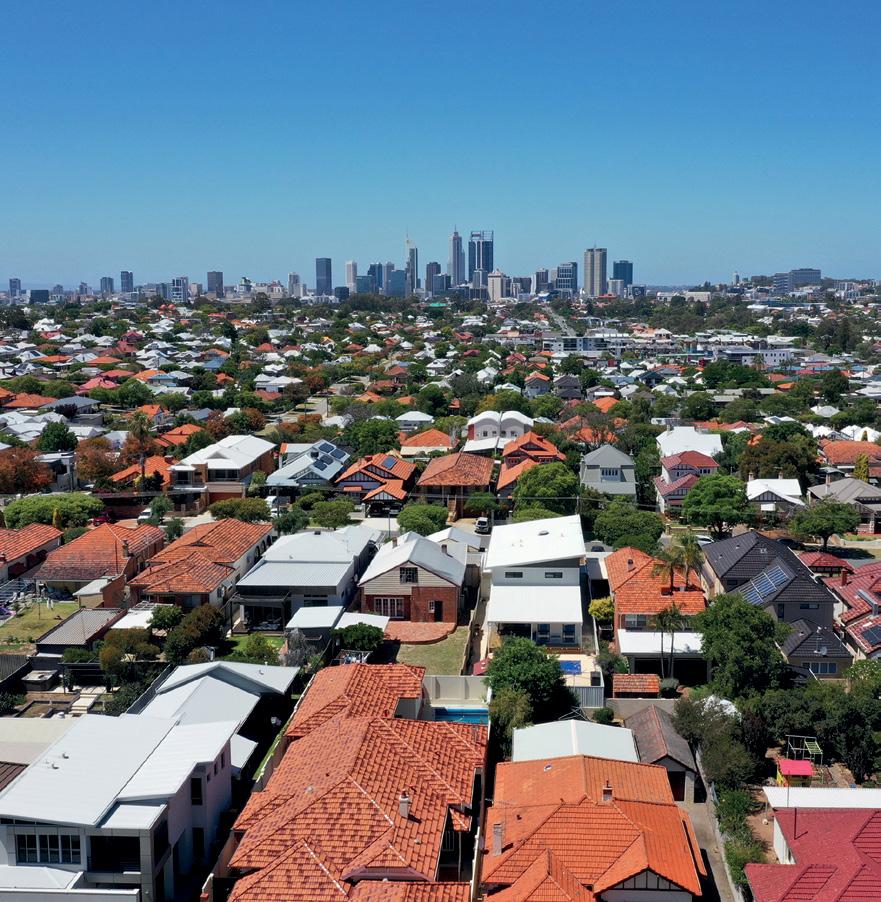
ALGA President, Linda Scott, welcomed the Federal Government’s new Housing Support Program, and said that it would support councils to build more liveable communities.
“We are delighted the government has heard our call for more investment in vital infrastructure that will enable new housing developments,” Cr Scott said.
“We can’t fix the housing crisis by just building more homes – we have to invest in the amenities and local infrastructure necessary for strong, healthy communities.
“This new Housing Support Program will help Australia’s 537 local governments build the parks, footpaths, roads,

sporting grounds and other local infrastructure that are vital for liveable communities.”

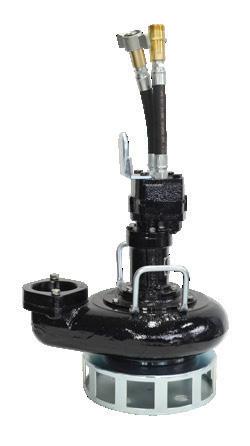

Cr Scott also welcomed the announcement of further support for built environmental professionals, including local government planners.
“ALGA’s research shows there is a severe shortage of skilled planners in local government, and we need increased investment to facilitate streamlined housing approvals and strategic planning to identify new growth areas,” Cr Scott said.
Cr Scott also said that it’s vital that local communities continue to have a say in development in their local areas.
“We believe that we get better housing outcomes when decisions are made locally.
“We look forward to working with all levels of government to address the critical shortage of affordable housing across our nation.”

The execution of Australia’s energy transition is becoming more urgent, leading to new, innovative ways of reducing emissions being considered, and used, across the country. For example, at an everyday wastewater treatment facility in Sydney’s South-East, a solution to the complex energy transition conundrum is emerging –turning waste into energy and embracing a circular economy.

At Jemena’s Malabar Biomethane Facility, gas supply is being redefined, evolving from a source of emissions to a means of emissions reduction.
The project symbolises the revolution of renewable gas, a profound paradigm shift in the way the nation thinks about gas and the role of gas networks, in the crucial transition to a lower emissions economy.
Jemena has begun extracting biomethane from wastewater and injecting it into its New South Wales gas network from the ground-breaking Malabar demonstration project, co-funded by ARENA.
Initially the project will target 95 terajoules (TJs) of gas annually, before expanding to 200TJs of biomethane within

Gas is not merely a transitional fuel; it is a fuel in the midst of a transition. By investing in Renewable Gas now, we can secure reliable and sustainable energy solutions for the future, offering more options for households, businesses, industries, and transportation. Renewable Gas, which includes green hydrogen generated from renewable electricity and biomethane made from organic waste, is an additional source of energy that is already being successfully utilised in other parts of the world. It has the potential to help Australia meet its emission targets more efficiently while creating new opportunities for regional employment and many circular economy benefits as the country moves toward a net-zero emissions goal by 2050.
four years – equivalent to the average annual gas needs of approximately 13,300 homes. For local governments, this story has a compelling chapter: the opportunity to create opportunities in attracting investment and enhancing sustainability outcomes, by linking waste services with the generation of renewable gas. While still in its infancy in Australia, renewable gas –including biomethane made from organic waste – is now a crucial part of Europe’s energy mix, showcasing a great opportunity for Australia to mirror this success if policy is formed to encourage investment and uptake.
Find out more about renewable gas projects and opportunities in NSW: gorenewablegas.com.au

Clarence City Council has responded to a submission to the Tasmanian Government by Chambroad for its Kangaroo Bay development to be declared a major project.

City of Clarence Mayor, Brendan Blomeley, said that while Council is yet to send its own submission to the State Government in response to the proposal by Chambroad, the proposal does not have the necessary attributes to qualify as a major project.
“This is a complex situation, with many moving parts, and while I understand we are setting a precedent, with this being the first major project proposal, the proposal has many flaws,” Mayor Blomeley said.
“While this application deals with the development side of the process, attention has to be given to the fact that the Council and Chambroad are engaged in a legal buy-back process for the land, so I ask, if land ownership is on the table, how can the State Government grant approval for a development proposal to be considered by an expert panel if the proponent may not own the land?
“There is a serious risk that this process will result in very considerable waste of public money and other resources better directed to other purposes within the community.
“Further to this, I question the eligibility of this project to be declared a ‘major project’. This is not a unique project within the context of the southern region, with this initial process potentially setting a very low threshold for future applications.”
The City of Clarence Council will provide a public summary of its submission after it has been sent.

Major planning reform is coming, and Victorian councils not only understand this, they are also embracing it.
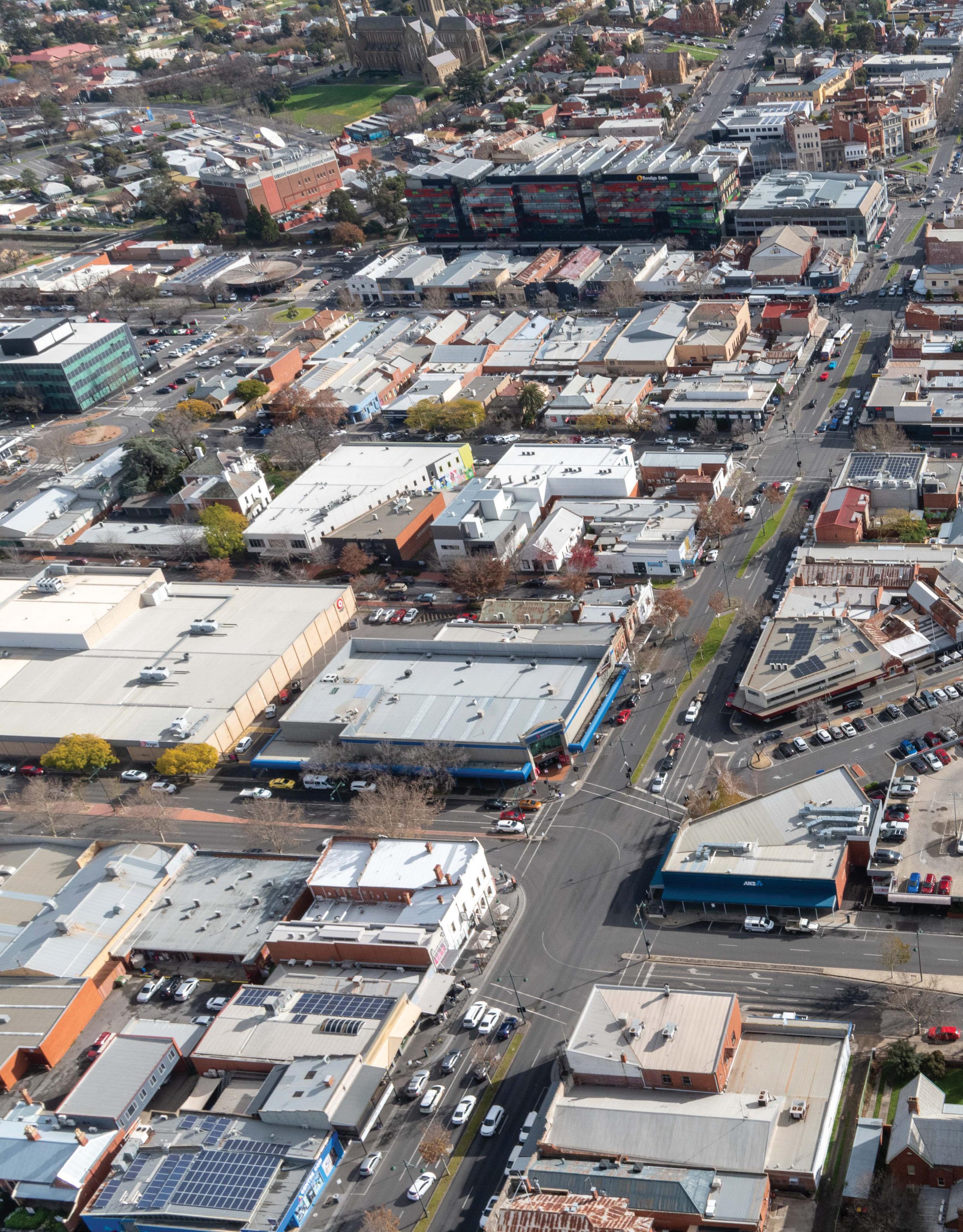

Councils have been calling for system-wide improvements for years. The Planning and Environment Act is now 36 years old and despite updates to the edges along the way, Victoria deserves a planning system that clearly articulates what our growing communities need today and tomorrow.
Both the State Government and councils are critical players in planning. It is essential reform is designed in partnership by both levels of government and that it outlines clearly both levels’ respective roles.
A genuine partnership on reform will go a long way to ensuring we have a planning system that is fit for purpose and delivers on community expectations and the infrastructure individual communities require.
As the level of government that deals with the overwhelming majority of planning applications (as well as having input into all) we urge the State Government to tap into the technical expertise and local knowledge that councils and council officers, as subject matter experts on planning, hold.

Community input has been a strength of the Victorian planning system for decades and has helped deliver better development outcomes. Communities need to have
confidence that not only can they be heard, but that they have a meaningful place in the planning of their neighbourhood.
A legitimate partnership with councils is the best way of ensuring the reforms can tackle 21st century issues like climate change, and the housing affordability crisis.
Planning reform has hit the headlines because it has been linked to the housing affordability crisis across the country. In August, the National Cabinet announced a housing package that includes incentives for states if they can reform their planning systems to allow additional housing stock to be introduced.
Planning, however, is broader than just housing.
The ultimate role of planning is to create a transparent, rules-based way to progress development towards a shared, community goal. Good planning delivers liveable, sustainable, and connected communities and balances the needs of future generations with those of current residents.
Councils support increasing density where it enhances community, however this needs nuance and diversity – in building types, and consideration of transport and employment options.
To deliver the housing Victorians need, the MAV would like to explore inclusionary zoning, mandatory social and affordable housing contributions, strategic planning that supports increased housing capacity, and economic levers to convert the current stockpile of approvals into supply.
It's a falsehood that housing affordability problems are driven largely by hold ups in council planning decisions.
House construction today is a private, for profit, undertaking. There are many issues driving the scarcity of housing which underlies the affordability crisis, including warehousing of permits, land banking by developers, infrastructure costs, and delivery and national tax settings –issues that planning reforms alone cannot fix.
The MAV is currently collecting data on this and early indications show a significant number of approved developments are not being built, simply because they are not profitable.
Planning is not the obstacle that many loud voices – often with vested interests – claim it to be.
The chorus for planning reform has only increased with the long-awaited release of the IBAC’s special report into Operation Sandon.
Operation Sandon’s first recommendation clearly notes the need for all parties affected by the reform to be involved in its design and implementation. An important first step is for the MAV – as the peak body for local government – to be included on the Inter-departmental Taskforce, to be established, to coordinate the implementation of IBAC’s recommendations.
This would demonstrate a willingness to meaningfully engage with the local government sector and ensure council's views are represented and considered in any change.
Local Government will push for accountability, transparency, a place for the community to have a view, and decisions being made at the most appropriate level in reform.
Independent planning panels are another key recommendation. The MAV sees merit in such panels, provided they are applied in a strategic manner.
What Operation Sandon does make clear is that transparency is key and it will not be acceptable to simply replace councils in the planning system with what is currently an opaque planning process at the state level.
The MAV will seek that the planning powers of the state minister have the same principles applied to them as any applied to councils.
Sandon is only one part of the picture. Recent reports by Infrastructure Victoria, the Building Regulation Commission, and the Red Tape Commissioner all provide practical and sensible issues for consideration on broader planning reform.
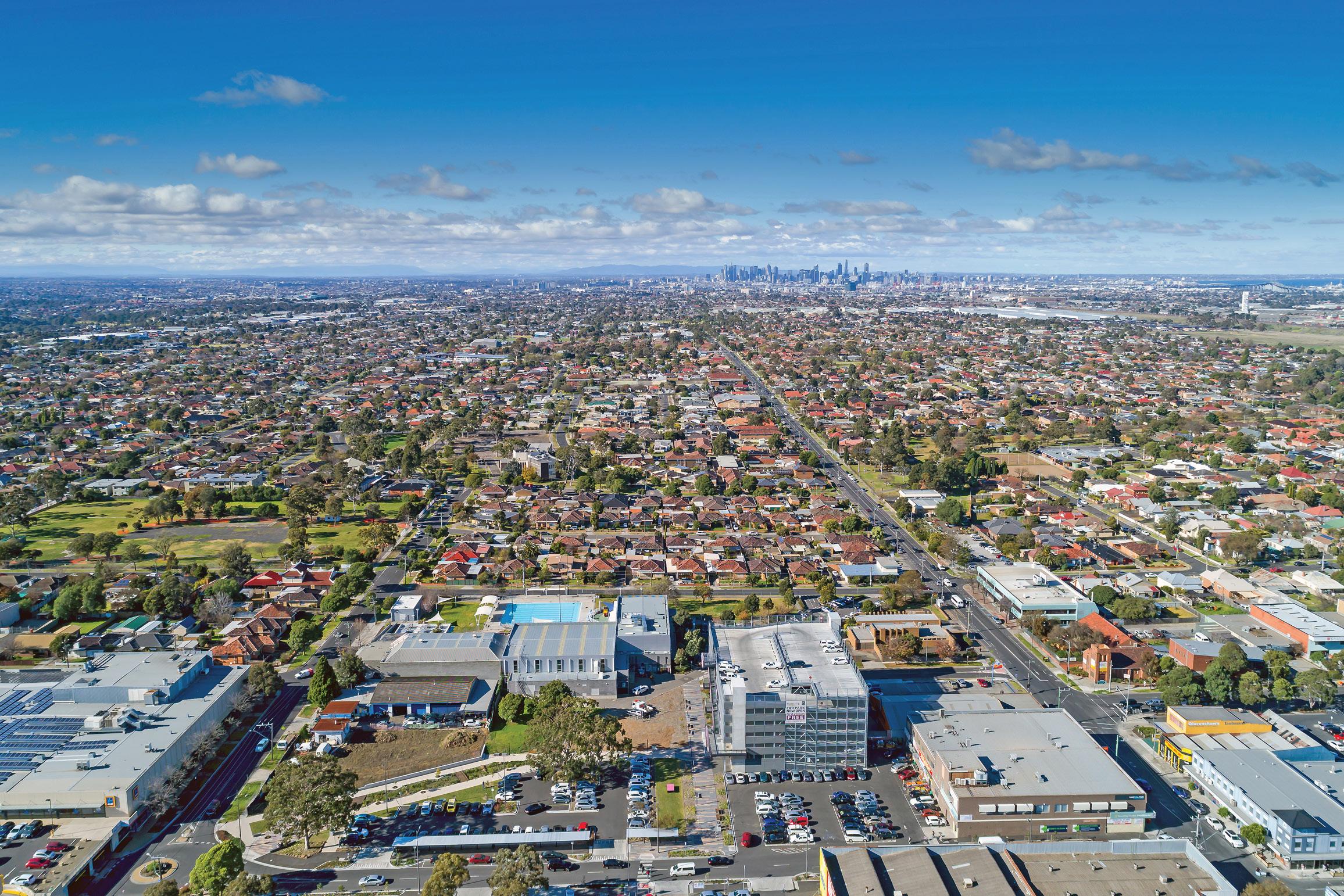
Our message is clear. Councils and councillors are best placed to understand the needs of developing and changing communities, and this is assisted significantly when we are working to set, clear, goals.
The best way to ensure the system continues to deliver is to have its subject matter experts at the table, so that planning is re-designed to provide the best possible outcomes for Victorian communities, both existing and future.
Every council wants to find, and retain, talented staff; however, if your organisation is using an employee surveying tool that only gives you overall scores, then you won’t know how your organisation is tracking since averages can only reveal so much.


This is because it’s blunt, rather than precise analysis and won’t give any insights about the outliers in your organisation. There’s no information about superstar teams or leaders that everybody can learn from, nor is there any detail about teams or leaders that are struggling, holding the organisation back, and could do with a helping hand.
Being able to dig deeper by looking at demographics within the business brings greater meaning to overall scores, as well as clear direction as to how, and where, to direct efforts for improvement. Taking a blanket approach without pinpointing precise areas for improvement means spending more time, money and resources than you need to, and runs a high risk of focusing on the wrong areas.
Australian councils have many challenges and competing priorities, that is why having enough data to make sound decisions, and drive the greatest change, means getting strategic about the best use of scarce resources.
Luckily, AskYourTeam has a solution that can make a big difference; by providing detailed data to guide decision-making and help council leaders and HR teams to invest time and resources only where it’s needed.

AskYourTeam’s platform goes beyond employee experience to bring together views and perceptions of customers and communities. We customise and specifically design surveys for councils so you can zero-in on the topics of importance.

We also help councils extract deep meaning from their data, and take action based on evidence. Results can be filtered by leader, location, team, and gender so that you know exactly what the issues are, and where they exist.
This leads to organisations being able to take actions that are going to make the biggest difference in moving the dial.
In a recent example relating to leadership, AskYourTeam analysis helped a client identify that it was in fact just a few leaders with leadership style issues that needed addressing, instead of all staff. By focusing their efforts on working with just those few who needed extra support, a survey re-test showed a 16 per cent lift in that small group, which lifted the productivity of the entire organisation.
This system is summarised well by one of our client’s team leaders, who stated that, “The real strength of the AskYourTeam process is that you get in-depth answers to questions and a lot of information that tells you where the problem areas are, so you’re able to identify what areas you need to focus on.”
It’s employee survey time, the results are in! Have you moved the dial? Do the numbers look good? Looking at overall averages will only tell you so much. Bring greater meaning to your results by digging deeper into your data.
AskYourTeam is the employee experience platform with a difference. There’s no one size fits all with us. Your needs are front and centre, so you get the actionable insights you need to really drive up productivity, wellbeing and retention in your council.

askyourteam.com

It’s easier with the right partner by your side

While traditional trade publications have quality audiences and high levels of trust, they can lack the full range of services to guarantee a return on your investment. And while traditional marketing agencies offer the latest marketing techniques, they don’t have the audience or the industry understanding the B2B sector needs.
Monkey Media is the missing link that brings together a trusted brand and powerful audience, with a complete agency offering.

The parking sector is changing rapidly. Thanks to new technologies and innovations, parking is transforming from a manual process to an integrated, data-led, smart system. So, does this spell the end of the traditional coin and card meters? You might expect Craig Logan, General Manager of EasyPark ANZ, the largest Pay via Phone parking service in Australia, to claim that this is the case, but, for now, he sees old and new technologies working side by side.
The saying goes that life is not about the destination but the journey. But in the parking industry, it is all about the destination.
Whether it’s for business or pleasure, for many, ultimately a car journey ends with paying for the use of a particular parking space.
It is a system that was first introduced in Oklahoma City in the US in 1935. Twenty years later, when Hobart installed its first meter on 1 April 1955, the Australian paid-parking industry was born.
For many years the most common method of paying for parking was by coins and more recently, by bank or credit card. In most cases, users either
identify the bay they are in or display a printed ticket on their dashboard. But mobile devices have revolutionised the way we park.
EASYPARK'S RAPID GROWTH
EasyPark was established in Europe in 2001, and its Pay via Phone service is now active in more than 25 countries and nearing 4,000 cities. It is the most used Pay via Phone parking service in the world – and in Australia.

The EasyPark ANZ team was established in 2012 and today we have close to three million users. Our rate of growth across Australian cities continues to accelerate and we are now increasing our user base by about one million new users per year.
The City of Perth is the fourth Australian capital city to adopt EasyPark’s Pay via Phone service, in addition to Canberra, Hobart and Melbourne. We also have established partnerships with more than 70 Australian councils and Parking Operators including City of Newcastle (NSW) and Gold Coast Council (QLD) to name a few.
The beauty of our app is that it is easy to set up and gives users control because they select their start and finish time. Unlike traditional physical parking meters which require the user to pay up front, (often over-spending for fear of
being fined), or other apps which require preloaded funds, EasyPark App users only pay for the time they park. If they end their parking sooner than expected, they can stop early and then only pay for the time they use, saving money.
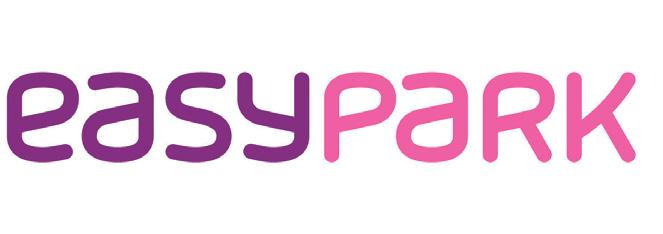

So where does this leave the humble parking meter? Well, put it this way, do you remember when there was a phone booth on every street?
If so, you’ll recall that phone boxes were amazing technology for their day. Overnight, we could contact anyone, from anywhere.
Fast forward to today, and phone booths are few and far between all thanks to the introduction of the mobile phone. With an estimated 22 million Australians now owning a mobile phone, there’s hardly any need for public pay phones – and if you do find one that works, it’s probably damaged or covered in graffiti.
Technology is the driver behind these changes, and we are witnessing something similar with the introduction and adoption of the parking apps versus the traditional parking meter. The paid-parking industry is evolving with technology – contactless, frictionless
and the ability to remotely extend your parking is now the new normal.
The other challenge facing the traditional parking meter is the very technology that enables its functionality. Most of the current meter fleet out on the street is connected via modems restricted to the 3G network. In June 2024, 3G will be shut down.
Fortunately for many EasyPark clients the uptake of the app is so high (some council clients are reporting 70 per cent + uptake), that many councils are electing to not upgrade their parking meters and even scale back on their fleet.
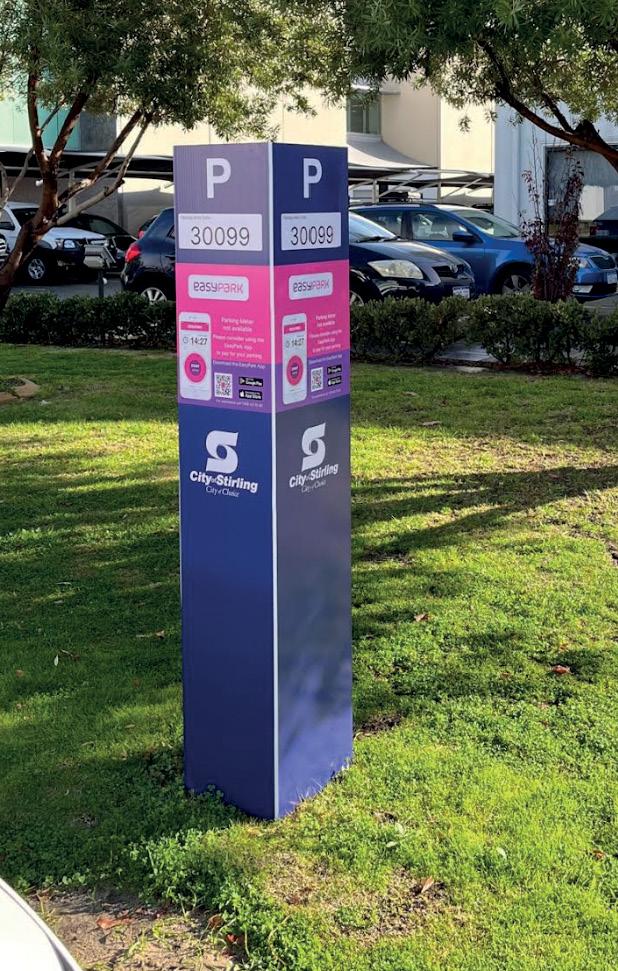
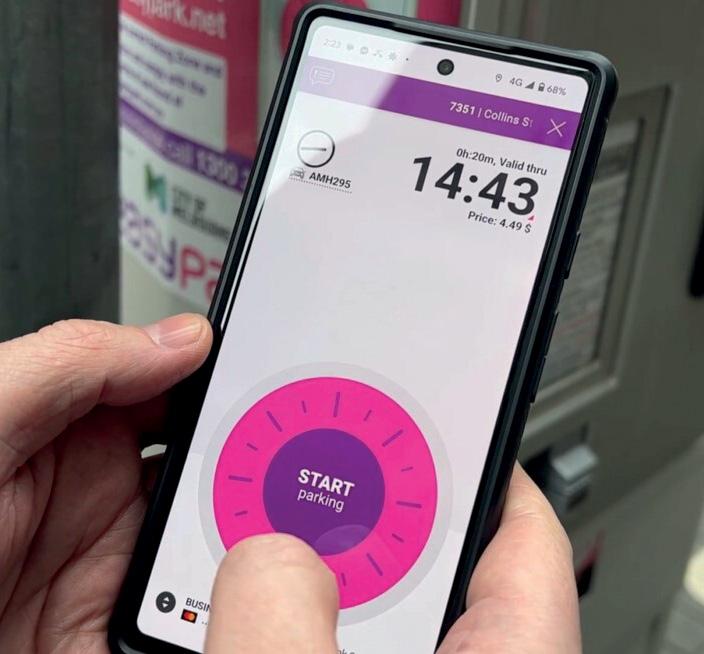
One council has informed us that it will reduce its fleet by about 85 per cent while two other parking operators have already made the executive decision to decommission their meters completely and move to 100 per cent Pay via Phone.
In these examples, and for other city councils coming to the same cloud-based conclusion, this means significantly reduced upgrade costs from 3G modems to 4G and 5G over the years and in turn, yield significantly reduced ongoing Opex costs into the future (things like EMV compliance upgrades are also a thing of the past).
of options. Without doubt though, this mix of payment methods is now rapidly changing because of the high level of app adoption to replace parking meters across Australia.
Ultimately, councils and parking operators have to provide choice for the end user and it is important to cater for all demographics with a mix
It will be interesting to see how future innovations, increased digitalisation and the associated data will impact commuters, city planners, businesses, day-trippers and tourists as journey numbers increase following the bounce back from the global pandemic.
So, is the parking meter dead? Well, we look at it this way. With every passing day a physical parking meter becomes older, whereas mobile phone technology gets upgraded and actually improves with time.
It won’t be long before dependency on expensive physical parking meters wanes to a point where they have a similar distribution to physical on street phone booths. So while the parking meter still has a place on the street today, it might not tomorrow.
We will continue to work with city councils on this digital journey and we will be there to support them when they reach their destination.
Australia’s climate is rapidly changing, giving rise to a significant amount of uncertainty among communities. For local governments, smart environmental monitoring technology presents an opportunity to gain deeper insights into environmental impacts. For more than a decade, the City of Townsville has been developing locally-made environmental sensors to better understand how changing weather conditions can impact the community.
As Australia’s largest tropical city, Townsville is renowned for its stunning coastal landscapes and is a popular destination for travellers. While the region’s climate is characterised by variation, rising temperatures are causing shifts in this natural variability. This will likely influence rainfall changes in the coming decades, with heavy rainfall and intense storm events expected to increase.
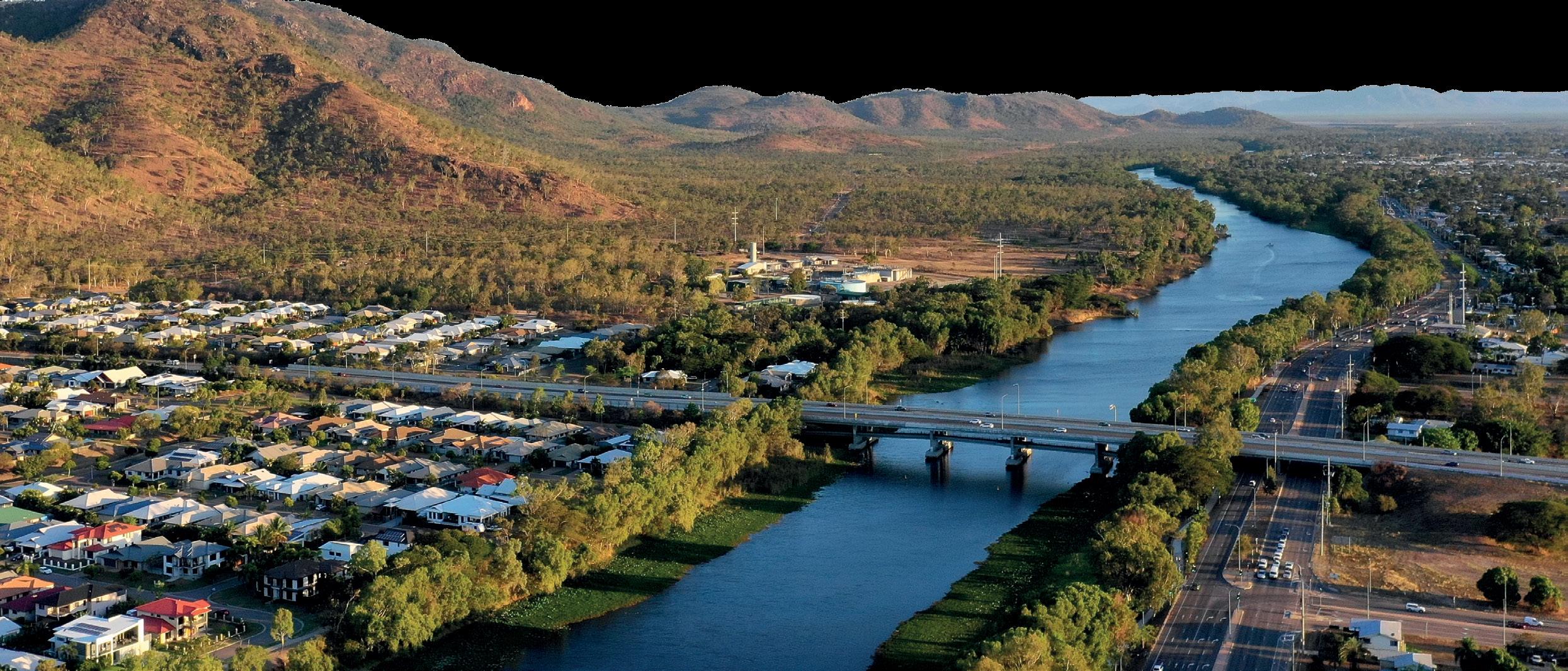
To support the city to grow sustainably, and gather data as it does so, the City of Townsville has been developing environmental sensors to capture micro-climate data.
Deployed in different natural and urban environments across the city, the solar-powered and non-intrusive sensors can collect environmental data of small-scale changes that are normally invisible to humans, as well as major weather events like heat waves, floods and cyclones.
As part of the Queensland Government’s North Queensland Disaster Mitigation Program, the City has received $125,000 in funding from the Queensland Reconstruction Authority to deploy the technology.

Townsville City Council Community Health, Safety and Environmental Sustainability Committee chairperson, Maurie Soars, said Council has been working with Townsville-based start-up and innovator, LiXiA, to build and industrialise the environmental sensors.
“Council has been developing sensors for the past ten years, working in a variety of landscapes and environments where
sensor data can be collected, stored and distributed wirelessly from otherwise remote and difficult to access locations.
“These locally made sensors can measure everything from temperature, humidity, atmospheric pressure and solar irradiance to rainfall, water height, water quality, and the tilt and vibration that trees feel in the wind.
“Our sensor research, development and deployment of tropicalised lower cost sensors has involved integrating and developing all aspects of data relationships from collection to distribution and secure management.
“We have developed a long-range, low energy and packet data system that is designed to be lower maintenance and cost less to implement, while generating near-real time data. We utilise a LoRaWAN network for transmission of data.”
Funding from the Queensland Government will be used to manufacture and implement 60 overland flow path sensors and 40 rainfall buckets.
The climate is changing quickly, with rapid shifts in precipitation patterns, extreme weather events and disrupted ecosystems creating uncertainty. The impacts are difficult to predict, with the effects varying widely at regional and local levels.
With this level of uncertainty, it's important for all levels of government and communities to adopt strategies that consider a range of potential impacts, embrace adaptive approaches and prioritise sustainable practices to minimise the negative effects of climate change.
Australia has already experienced increases in average temperatures over the past 60 years, with more frequent hot weather, fewer cold days, shifting rainfall patterns and rising sea levels. This trajectory is expected to continue, and it is also expected that extreme rainfall will increase, likely resulting in more devastating flood events.
Coastal cities like Townsville are vulnerable to erosion and infrastructure damage which can increase maintenance costs, disrupt essential services and result in a surge of energy and water usage.
Climate change also poses a threat to tourism. For governments, this will mean a greater need for emergency planning, educating travellers on conditions and preparing for changing seasonal demand.
Local governments across the country will face their own climate challenges, putting increased pressure on budgets, and underscoring the need for proactive and sustainable solutions.
Sensors offer a range of benefits for environmental monitoring including, but not limited to:
∞ Real-time and accurate data to identify and prevent environmental issues
∞ Reduction of costs associated with manual data collection and analysis
∞ Widespread remote monitoring of large and difficult to access areas
∞ Identification of natural and climate change-related disasters and deforestation
∞ Better use of resources
The information gathered from Townsville’s smart sensors will play a role in disaster preparation and response, and can be integrated into systems used by different government agencies, making it a critical resource.
The data can help build knowledge of environmental flow paths during heavy rain and flood events, and provide further insight around tropical design.
During flood emergencies, sensors can provide earlier warning and evacuation times to protect communities and lives.
“Low-cost sensor packages means we can generate realtime data which can provide a better understanding of impacts during environmental events and disasters, supporting residents and environmental repair works,” Mr Soars said.

Townsville’s sensors will also be used to inform a variety of future environmental and urban planning initiatives.
Mr Soars said the insights gained from the sensors will ensure council's urban footprint is developed outside of key environmental natural areas, reducing impact on these spaces.
“Council is committed to growing Townsville as a sustainable destination and a tropical environmental research centre, attracting businesses that are focused on delivering positive impacts for our environment.
“With this data we can improve our information collection and our analysis, and visualisation, of information.
“Council is focused on growing Townsville’s circular economy where we make sure our by-products are used to the best of their ability, like transforming weeds into healthy soils and
working with First Nations people and businesses in reporting on our local landscape,” Mr Soars said.
“As we continue to collect data from our environmental sensors we will use this data to help protect and regenerate our environments.”
Data collected from the deployed sensors will be collated and made available to the community through council’s Townsville Dashboards website.
By providing near real-time data, the sensors can support council and the community to better manage energy costs in city buildings, homes and businesses, and to improve council’s understanding of complex urban waterways and wetlands. This deeper insight into environmental conditions will also support community resilience and guide effective decision-making.
Mr Soars said Council was proud to collaborate with local businesses and schools to build the sensors.
“Council has worked with researchers and students to offer opportunities for community involvement in applied research and development sprints to both uncover and learn from our local environment; applying experimental sensors, long-range wireless networks and insight driven data analysis.
“In these collaboration processes we have involved residents, students, researchers and local businesses, and even building owners and developers of artificial intelligence.
“Working with primary and high schools to get students building and helping deploy the sensors is a great way to engage young people and encourage them to think about environmental health in their own backyards.”
As the impacts of climate change reverberate through cites, sensor technology can help support ecosystems to thrive and prepare communities for an uncertain future, with Townsville leading this implementation of this innovative solution.
Partnering with preferred suppliers is a key way councils can reduce stresses associated with the procurement process, while ensuring transparency, compliance and cost-effectiveness. But the advantages extend beyond the government sector, with all industries benefiting from working with businesses that have received the tick of approval. Boasting this accolade, and recently endorsed by WALGA and Local Buy, Spectur is thrilled to offer solutions that meet the highest standards.
Preferred suppliers undergo a rigorous evaluation and vetting process to meet specific quality, reliability and compliance criteria set out by a governing body or industry association.
As a buyer, you can rest easy knowing these suppliers have been certified as reliable, with a track record of delivering quality products or services while maintaining competitive prices.
Spectur is now proudly listed among the preferred suppliers for the WA Local Government Association (WALGA) and Local Buy, reaffirming its commitment to delivering quality solutions that meet the high standards of trusted public entities.
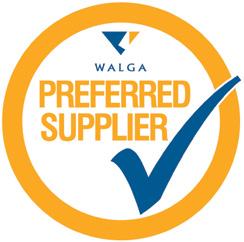
Members of the WALGA can seamlessly procure goods, services and works through the WALGA Preferred Supplier Panels (PSPs).
A key feature of these panels is the lowest price guarantee, mandated for all endorsed suppliers.
Establishing the PSPs follows a meticulous process. WALGA starts by researching and consulting with local governments and relevant industries to ensure preferred suppliers align with member needs.
While WALGA’s PSPs are tailored to the needs of Western Australian local governments, all industries can benefit from partnering with suppliers that have gone through its processes.

WALGA takes action to address any problems early on, conducting a thorough risk assessment to pinpoint any procurement risks. Tender specifications are developed
collaboratively with professional expertise, sector input and legal advice.
Dedicated contract managers keep everything on track by monitoring KPIs, conducting compliance and risk management audits and quarterly contract management engagements. Buyers can be assured that PSPs are fully compliant with local government regulations and national competition laws, including the Competition and Consumer Act 2010 (Cth).
Value for money underpins every WALGA PSP, with a number of factors to be considered to ensure the most optimal outcomes for local governments.
Robust evaluation processes are in place to pre-qualify preferred suppliers. WALGA scrutinises their experience, technical expertise, qualified staff, and ensures they have a track record of delivering high-quality goods or services.
Preferred suppliers validate their offerings against the technical requirements specified in the PSP tender, mitigating potential purchasing risks through due diligence processes. These encompass independent financial viability assessments, thorough reference checks, credit rating evaluations and scrutiny of certifications, licences and professional affiliations. A diligent assessment of tenders, including whole-of-life costs, ensures comprehensive value for money. Preferred suppliers are mandated to provide their most competitive prices and supply conditions to WALGA members, ensuring transparency and the assurance of exceptional value. Importantly, members can negotiate with preferred suppliers to maximise
value for money. They can leverage additional discounts on the basis of the volume or value of items they are purchasing. Such an approach cannot be used by local governments within a public tender process.
Established by the Local Government Association of Queensland (LGAQ), Local Buy facilitates streamlined purchasing processes for local governments and public sector entities across the country.

Local Buy conducts a meticulous tender process, with extensive consultation with local governments and industry experts to ensure valuable contracts. It undertakes risk analysis and holds a comprehensive evaluation by a panel of local government representatives and Local Buy Category Manager.
Buyers can be assured that Local Buy has assessed all PSPs industry accreditations, technical expertise and compliance.
Suppliers must comply with contract conditions, legal requirements, and create an online presence in Local Buy’s VendorPanel.
Ongoing management by a dedicated Local Buy Category Manager ensures the performance, compliance and best returns for local governments and other organisations.
Local Buy and WALGA’s rigorous endorsement process and commitment to high standards aligns seamlessly with Spectur’s mission to provide innovative solutions that uphold quality and excellence across diverse sectors.
To learn more, go to https://spectur.com.au/






Smart cities leverage technology and data to enhance liveability, sustainability, and economic prosperity. However, some parts of the community are expressing growing concerns that the implementation of smart city initiatives could lead to an invasion of privacy, restriction of freedom and increased surveillance. Here, we explore the concerns surrounding visual surveillance technologies, including Closed-Circuit Television (CCTV) and the delicate balance between privacy, safety, and freedom.
Community attitudes towards surveillance and smart city innovations are varied, with some fearful and angry at the alleged resulting lack of privacy.
For example, a recent TikTok video from Melbourne, where a middle-aged man climbed a street pole to willfully destroy a CCTV camera with a hammer, was widely shared and supported due to the perception of CCTV as an unnecessary invasion of privacy and government surveillance.
Critics of smart cities often highlight the spurious, acrostic
definition of "smart" in smart city as surveillance, monitoring, analysing and reporting technology, which perpetuates the notion that smart city initiatives primarily revolve around intrusive surveillance.
Of course, smart city initiatives vary greatly from those focused on bridging the digital divide, addressing transport challenges and data-driven decision making across the built and natural environment.
Privacy is an inherent and fundamental right that deserves safeguarding, and it is entirely valid for citizens to have
concerns regarding any potential encroachment resulting from the use of CCTV.
As technology advances and becomes more powerful, the risk of unnecessary surveillance becomes a legitimate concern. There is both a strong need to inform citizens on how CCTV is being used, and more importantly, for robust policies and regulations to ensure strict control over the use of CCTV footage and prevent misuse, such as unauthorised access, unwarranted intrusion, or excessive surveillance.
On the other side of the debate lies the undeniable value and role of CCTV in enhancing safety and security.
Many community engagement pieces have shown that a majority of people, particularly women and at-risk groups, perceive CCTV as a significant means to augment their safety.
In a recent Geelong-based survey conducted on the proposed installation of CCTV, an overwhelming 79 per cent of respondents expressed support for CCTV, with some questioning the efficacy and value for money in addition to privacy-related concerns.
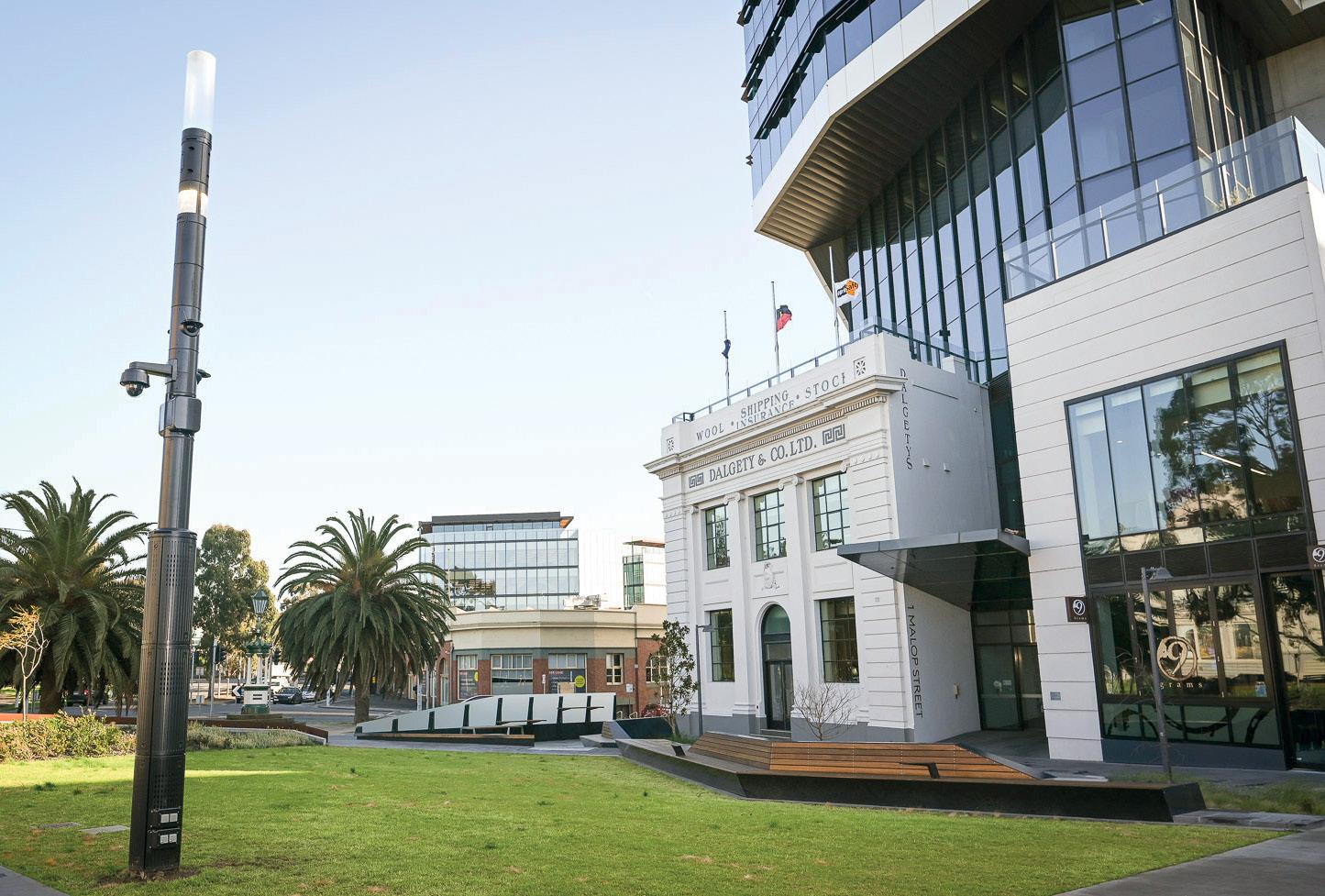
For many individuals, the presence of CCTV provides a sense of security, enabling them to feel more comfortable in certain public spaces and empowering them to participate in activities they may have previously avoided (e.g. staying out late at night, travelling alone).
In other words, the removal of CCTV would hinder the freedom and mobility of many individuals, thus inhibiting their full participation in society.
City safety is a complex issue that necessitates a multifaceted approach, and CCTV plays an important role within this broader strategy. It is well established that CCTV not only acts as a deterrent, but is a critical tool in crime clearance rates, both directly but also in repeat offences (e.g. graffiti, property theft).
Banning CCTV altogether would deprive communities of a valuable tool for crime prevention, investigation, and evidence collection.
To strike a balance between privacy concerns, the freedoms of all citizens and public safety and law enforcement benefits, it is imperative to establish, implement and audit stringent guidelines for CCTV implementation.
Implementing CCTV infrastructure and managing its data responsibly encompasses a wide range of considerations. This entails establishing transparent guidelines for data storage, implementing access restrictions, high functioning steering committees and conducting regular audits to ensure compliance with privacy and security standards.
In order to foster trust and accountability, transparency should
be prioritised in the use of CCTV. This means ensuring that individuals have access to information regarding where and how CCTV data is collected, stored, and used. Moreover, incorporating mechanisms for public input, such as conducting public consultations or establishing oversight committees, enables the community's voice to be heard and helps address any concerns or feedback related to CCTV implementation and operation.
To have a meaningful dialogue about the merits and drawbacks of CCTV, it is essential to avoid black-andwhite thinking.
Painting all CCTV systems as invasions of privacy ignores the nuances and potential benefits they provide to communities, and while the concerns surrounding privacy and freedom are valid, recognising the importance of safety creates a foundation for productive discussions and viable solutions.
Balancing privacy, safety, and freedom in the context of CCTV is a complex task. Striking the right balance requires responsible implementation, strict regulation, and open dialogue with the community.
By acknowledging the potential benefits of CCTV while safeguarding against misuse and abuse, we can create an environment where privacy and safety coexist harmoniously, with the rights of individuals to navigate public spaces with confidence and peace of mind.

In order to proactively solve current and future water management challenges, Australian water service providers need to implement long-term, innovative approaches now. By focusing efforts on the innovation of new research and designs, councils and water utilities can create a holistic, circular approach to water management, rather than only a short-term, temporary solution.
Innovative digital solutions for water management should focus on analysing real-time data, communicating with end-users, increasing sustainability, improving asset efficiency, and proactively detecting asset faults or leaks.
With the increased data available thanks to digitised assets, water service providers can understand how to conserve water, maintain asset quality and strengthen their relationships with their communities.
Digitising water assets allows service providers to select a customised solution from a range of technologies – such as IoT devices and smart meters – to best suit financial, environmental and community needs.

Central Highlands Water (CHW), a water and wastewater utility servicing the Central Highlands region in Victoria, including Ballarat, Maryborough and Daylesford has recently entered into a contract with global water management company, SUEZ, to upgrade CHW’s existing water meters with 75,000 fully integrated digital water meters. Aiming to begin installations in the late 2023 and to be completed by 2026, the digital upgrade is intended to provide a range of solutions to local challenges.
The introduction of digital meters will enable an improved customer experience through the availability of near real-time data, which can assist with leak detection and to identify areas where water can be saved by both CHW and their customers. Digital meters are able to provide customers with exact water usage readings at increased accuracy and speed.
The rollout will also reduce safety risks for CHW’s meter reading team. By automating the reading process, CHW staff will no longer be required to travel long distances on roads and access customers’ properties, offering both safety and environmental improvements. As the meter data will be collected in near real-time through digital
channels, it will also speed up the repair process for any faults or leaks.
By detecting and reducing water leakage, the digital water meter installations will help CHW’s customers identify areas where water can be saved, resulting in a lower water bill.
CHW’s Managing Director, Jeff Haydon, said, “We are focused on providing digital solutions that deliver customer benefits and importantly improve our customers’ experience. With this new digital water meter rollout, we can provide our community with better service usage data, help customers to reduce bill costs, and proactively engage on water conservation.”
The digital meter upgrade is a move strongly supported by CHW’s local community; through the utility’s extensive community engagement, customers have encouraged CHW’s digital transformation.
SUEZ’s Business Development Manager, Laurence Daly, emphasised the proven effectiveness of digital solutions to increase customer satisfaction rates.
“Water providers are struggling with old challenges, and old solutions are no longer viable. New solutions like digital water meters improve asset efficiency and reduce the costs and resources needed for local communities,” Mr Daly said.

“We don’t want customer savings to be an uphill battle. We’re focusing on circular, holistic water management strategies to provide long-term solutions to current and future challenges.”
SUEZ has recently developed a strategic plan highlighting similar objectives to the digital water meter project. The company’s plan will focus on implementing circular water and wastewater management solutions that increase innovation and strengthen investments for water providers and local communities.
Through its new research and development (R&D) commitments, SUEZ is exploring innovative digital technologies that offer water providers new, customisable water management solutions to existing – and future –challenges around Australia.
By implementing digital solutions to local challenges, water providers can support the growth and development of internal climate adaptation and improve communication strategies within local regions.
Australian councils and water utilities are facing increased challenges in their water management due to tight budgets, ageing infrastructure, and the impacts of climate change. Here are some long-term water network solutions water service providers can implement to provide reliable, sustainable services to their communities.

 By Stephanie Nestor, Assistant Editor, Council Magazine
By Stephanie Nestor, Assistant Editor, Council Magazine
After a decade of poor quality, the water of Terrigal beach has improved thanks to an investigation into coastal water pollution, earning the attention of Australia’s scientific community. Implementing innovative technology and partnering with scientists, Central Coast Council has contributed vital research to help understand what causes water contamination and possible remedies.
Partnering with the New South Wales Government and the University of Technology Sydney (UTS), Council’s Water and Sewer, Environmental Management and Roads, and Drainage teams have been investigating the causes of poor water quality at Terrigal Beach, the Haven and coastal lagoons.

Since 2019, the teams have undertaken comprehensive audits of the water and stormwater in the area, which have gained the attention of the scientific community.
Central Coast Council’s initiative to improve beach water quality in its local government area was a finalist for the Applied Environmental Research category in the Australian Museum Eureka Prizes.
These awards recognise notable contributions to science, research, innovation and leadership across Australia.
Collaborating with scientists, researchers, and operational workers, Council has been able to apply cutting-edge technology to help find solutions to solve poor water quality in a nationally-significant project.
The investigation became a necessity after it was discovered that the water quality at several beaches in New South Wales was consistently poor, with the cause unknown.
As part of the initiative, Council’s teams, and scientists, implemented cutting-edge molecular microbiology and DNA sequencing approaches to accurately diagnose the source of the contamination.
Director of Central Coast Council Water and Sewer, Jamie Loader, said that once the team identified the sources of beach pollution, Council could focus on sewer remediation.
“The team demonstrated that sewage overflow into a specific stormwater drain had the biggest impact on water quality,” Mr Loader said.
“We inspected 115km of sewer mains and identified one third of these as in need of repair. We’ve since remediated 41km, which is 95 per cent of this problematic sewerage infrastructure.”
Mr Loader said that since the remediation works, Terrigal Beach has received two ‘Good’ ratings in the Beachwatch Program after a decade of ‘Poor’ results.
Bringing together scientists, technical experts and operational workers, the Council finally determined the impact of sewage contamination on water systems and what sewer remediation is needed.
Other causes of contamination that were discovered include stormwater run-off, which enters coastal waters from streets, parks, buildings and other areas, often carrying contaminants such as dirt, oil, chemicals, waste and much more.
Sewer overflows and leaks can occur after heavy periods of rain that cause excess rainwater to enter pipes. This contaminated water overflows into coastal areas, such as beaches, and can go undetected if these recreational water systems are not monitored regularly.
The research teams used several methods to test where the microbial contamination was originating from, including water samples, smoke testing, dye testing and CCTV camera inspection.
Water sampling helped direct other testing to target certain areas and pipes for future testing.
Smoke testing, which involves pumping artificial smoke into the sewer network, helped Council determine if houses or businesses had illegally connected gutters and drains. Dye testing involves inserting non-toxic dye into the sewer network to test for breaks or leaks. If there is a break, the dye will leave the sewer network and be visible in the stormwater network.
CCTV camera inspection was mainly used to identify damage and defects in pipes.
With innovative DNA markers, the research team and scientists from UTS could identify microbial contamination in the water samples, and determine that the pollution was caused by human sewage infiltrating stormwater after heavy rain.
Microbial testing is the most accurate method for detecting pathogens in water supplies and catchments, particularly for determining if faecal matter from sewage has polluted the water.
By focusing on microbial contamination, Council can inform remediation works by targeting damaged sewer pipes and preventing overflows.
Poor water quality in urban areas is a common problem for local governments in Australia. When residents use these recreational spots to swim, contamination from human waste can cause health problems, such as gastroenteritis.
Central Coast Council manages 320 wastewater pumping stations and eight wastewater treatment plants, with over 80 million litres of wastewater passing through the Central Coast every day.
To combat poor water quality, Council will roll out significant upgrades and expansions across its sewer networks over the next four years. These works will include innovative solutions gained from this research and trial, such as a purpose-made liner to reinforce pipes and seal leaks.
Mr Loader said that despite the significant wet weather and flooding events in recent years, Beachwatch monitoring has shown improvements in water quality during dry weather, being suitable for swimming almost all of the time.
“This is a direct indication of improved water quality. As work continues, the improvements have already been widely appreciated by the local community, with implications for water quality initiatives both nationally and internationally,” Mr Loader said.
Engaging the community has also been an important part of reinforcing Council’s wastewater assets, with blockages caused by the incorrect disposal of items down drains, such as wipes, sanitary items and rubbish, can lead to overflows and leaks.
To avoid this, Council has been educating residents about how they can help prevent overflows by ensuring only the right materials are flushed down the toilet.
Council Administrator, Rik Hart, said leading the partnership and community collaboration in the remediation phase of this project demonstrates Council’s dedication to improving water and sewer essential services, and placing our customers at the centre of everything Council does.
“The national recognition of Council’s work with industry leaders is fantastic, and an appreciated bonus to our partnership work,” Mr Hart said.
By drawing on the expertise of scientists and engaging residents, Council has contributed valuable insights that will not only ensure Terrigal beach can continue to have good quality water, but also help inform how other councils keep swimming spots safe for public use.
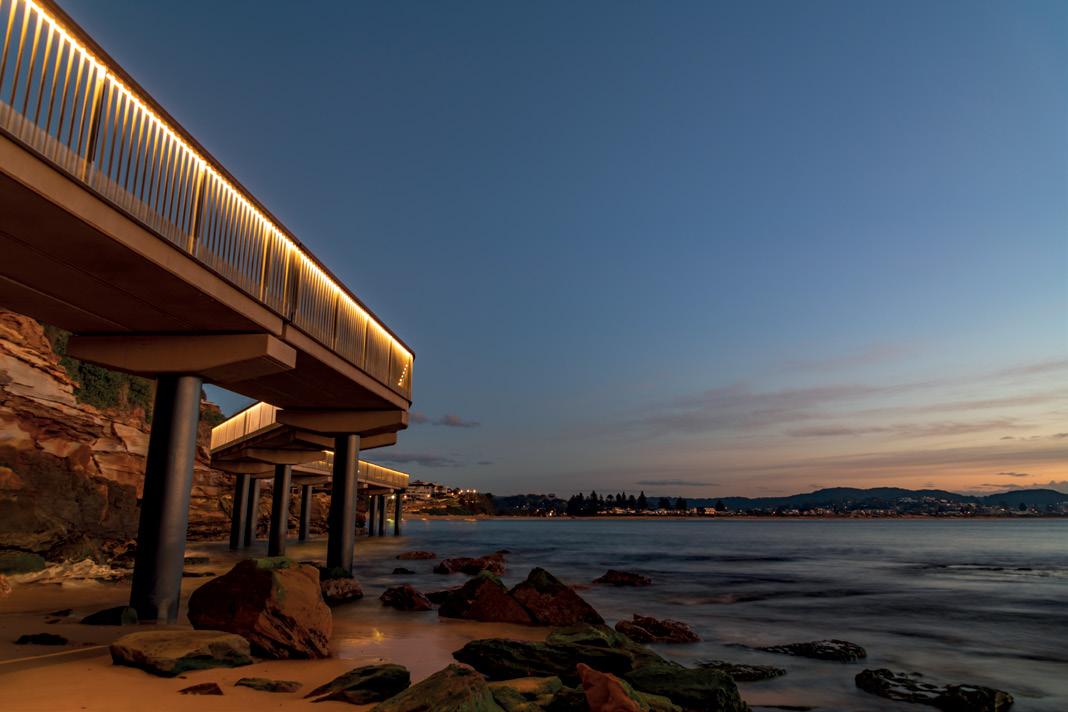

In remote terminal unit (RTU) applications such as pump stations, reservoirs and wastewater utilities, it is important that data obtained from the source is sent to a master supervisory setup both quickly and reliably, to be used by engineers for decision-making.
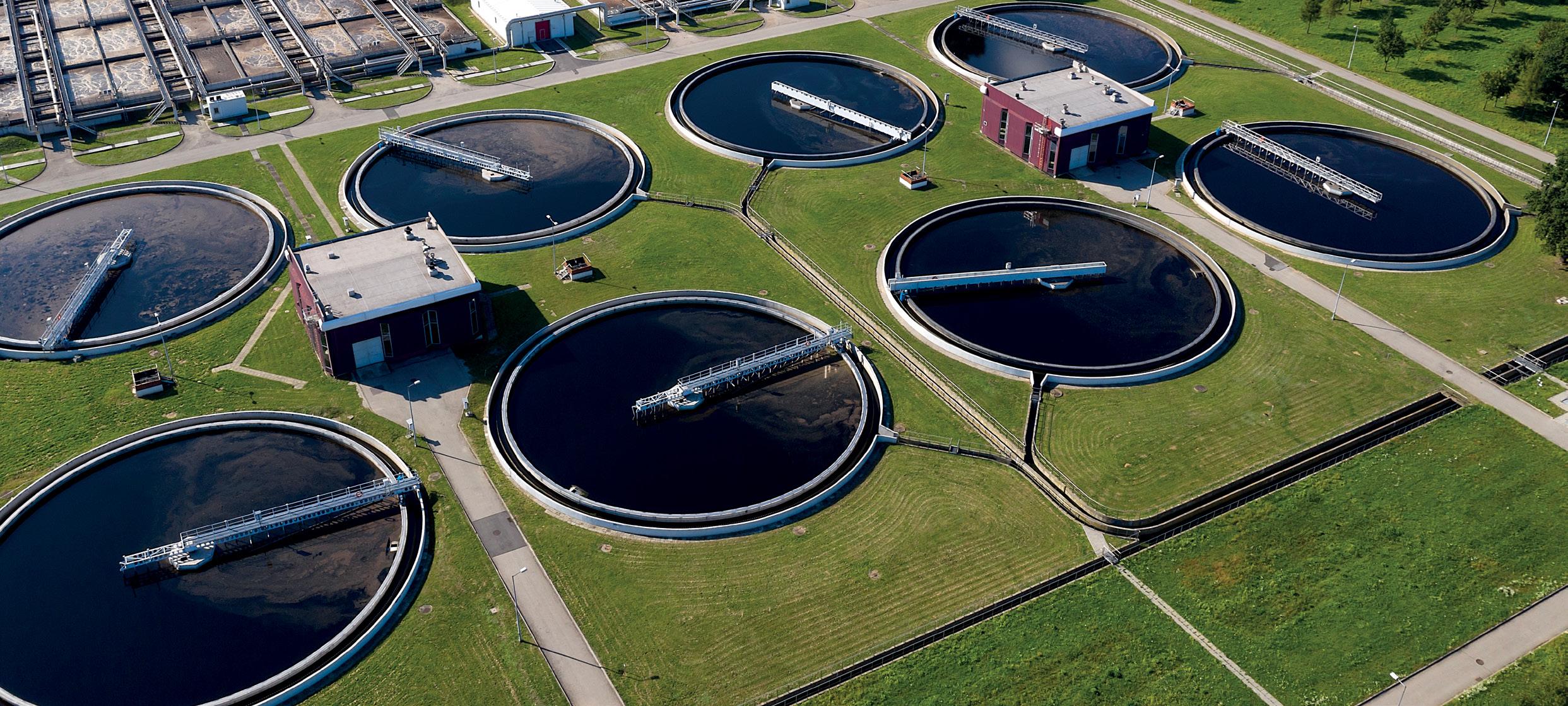
The communication protocol used between these RTUs and the master controller is known as the Distributed Network Protocol version 3.0, or ‘DNP3’. Originally developed for electric utility RTU manufacturers in the early 1990s, it is now an IEEE standard (1815-2012).
NHP is excited to introduce the AllenBradley Micro870® DNP3 Enabled Controller to assist with RTU panel design. These Micro870® controllers also have select models with in-built DNP3 communications.

It includes both serial and Ethernet versions and incorporates features for reliable communication, such as:
∞ Time stamping of message packets
∞ Event reporting capability
∞ Automatic logging of events during communication outages
∞ Increased protocol connectivity on serial and/or Ethernet ports
» DNP3 support on three Micro870® controllers
» Wide range of communication protocols that includes Ethernet/IP, Modbus RTU, Modbus/TCP, DF1, DNP3 and ASCII with MQTT support
∞ Increased security protection
» Enhanced password protection encryption (AES-256)
» Enhanced secure Authentication version 5 (Sav5) support in DNP3 protocol
∞ Modular with an easy-to-use architecture
» Plug-in modules extend functionality of the controller without increasing the panel space
» Expansion modules for scalability
∞ Cost optimised
∞ Use of the Connected Components Workbench software environment for programming, configuring and simulating connected devices
∞ Conformal coated version (2080-L70E-24QWBNK)
∞ Support wide operating temperature range from -20 to +65°C
∞ Remote I/O support via Class 1 implicit messaging function
∞ Can work with compatible third-party devices to transmit data reliably over long distances, such as radio or cellular networks to the main RTU
Sourcing critical data from remote areas over vast water and wastewater plants is crucial to making decisions for optimal performance and efficiency on site.
■ Easy installation
■ Fast and efficient performance
■ Smart connectivity for billing

■ Accessories available including charger posts, charging cables and upstreaming hardware

■ NHP service and maintenance packages available
■ NHP also offers EV Distribution Boards and EV Load Management Systems
Repairing underground water assets can be a costly and time-consuming task, with pipes and sewers being hard to reach. For councils, maintaining functional water and wastewater infrastructure requires a versatile, long-term solution that not only repairs damage, but also restores pipe integrity.
Water asset management demands regular maintenance and repairs as underground assets are susceptible to damage from high flow, tree roots and gradual deterioration.
But with different pipe sizes, materials and application along pipelines, council maintenance teams must select the right solution – which is often unique for each job – making repairs expensive and time-consuming.
When a council is responsible for overseeing different water, wastewater and stormwater assets, a versatile, longterm solution is vital to keeping costs down and essential services functioning.
While repairing underground assets can be tedious, the Quick-Lock system offers a straightforward installation and operation process to repair and strengthen pipelines.
The Quick-Lock system is a trenchless pipe rehabilitation solution that provides structural repair to the inside of pipelines.
With a CCTV crawler, the system can be transported to the point of repair. The packer inflates once in position while the system’s locking device holds the sleeve against the pipe to seal the damage, keeping out groundwater.
The ring space between the liner and old pipe is then permanently sealed, becoming watertight. In turn, this reduces the pipe’s vulnerability to infiltration and exfiltration. Alternatively,
a liner end can be protected against the effects of high-pressure cleaning using a Quick-Lock liner end seal, making the Quick-Lock a long-term solution.
Not only is the quick installation process easier for council water teams, it also means minimal disruption to the public, little to no excavation and less frequent maintenance.
Quick-Lock has a variety of applications for different pipes and materials, including concrete, clay, PVC and steel pipes.
As a versatile rehabilitation solution, Quick-Lock can repair:
∞ Holes
∞ Circumferential and longitudinal cracks
∞ Cross bores
∞ General inflow and infiltration damage
∞ Root infiltration
∞ Leaks
∞ Joint displacements
On top of repairing pipes, QuickLock can also be used to connect pipe liner systems and rehabilitate walkable sewers.
With many approvals around the world, including being DIBta and WRc Approved, NSF Certified and the Water Services Association of Australia endorsed, Quick-Lock is a reliable solution designed to meet rigorous industry standards.
Quick-Lock requires no chemicals, making it safe for use with sewage, stormwater and drinking water. This
ensures councils can meet regulatory requirements to provide safe water supplies for residents.
Quick-Lock, unlike other rehabilitation systems, is built for longevity. Made of 316L stainless steel, the sleeve body has high corrosion resistance, allowing it to function in sewage and potable water without deteriorating.
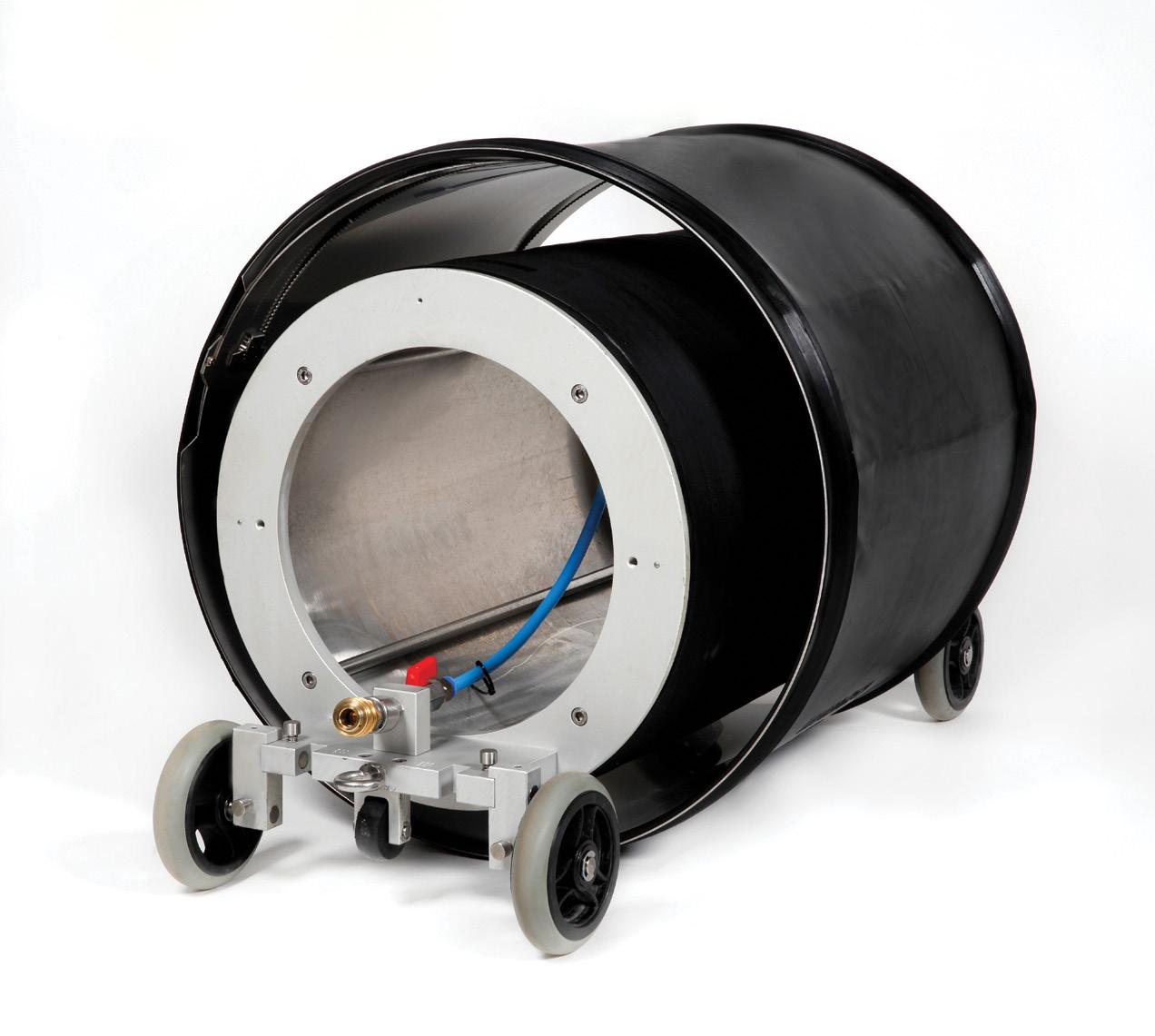
Quick-Lock is designed to be a longterm solution that provides decades of security for water providers and customers. The system strengthens the structural integrity of pipes by increasing load-bearing capacity, which becomes vital when pipes are handling heavy loads in populous areas.
By extending the lifespan of existing water assets, Quick-Lock can help councils save on maintenance costs for pipe replacements.
As one of Australia’s leading pipe rehabilitation equipment suppliers, Sewer Equipment Company (AUST) better known as SECA, has decades of experience with providing affordable asset management solutions.
As well as supplying Quick-Lock to Australian water providers and maintenance teams, SECA also offers installation training to new clients interested in using Quick-Lock for the first time.
For more information on how Quick-Lock can repair water assets for your council, head to www.seca.com.au

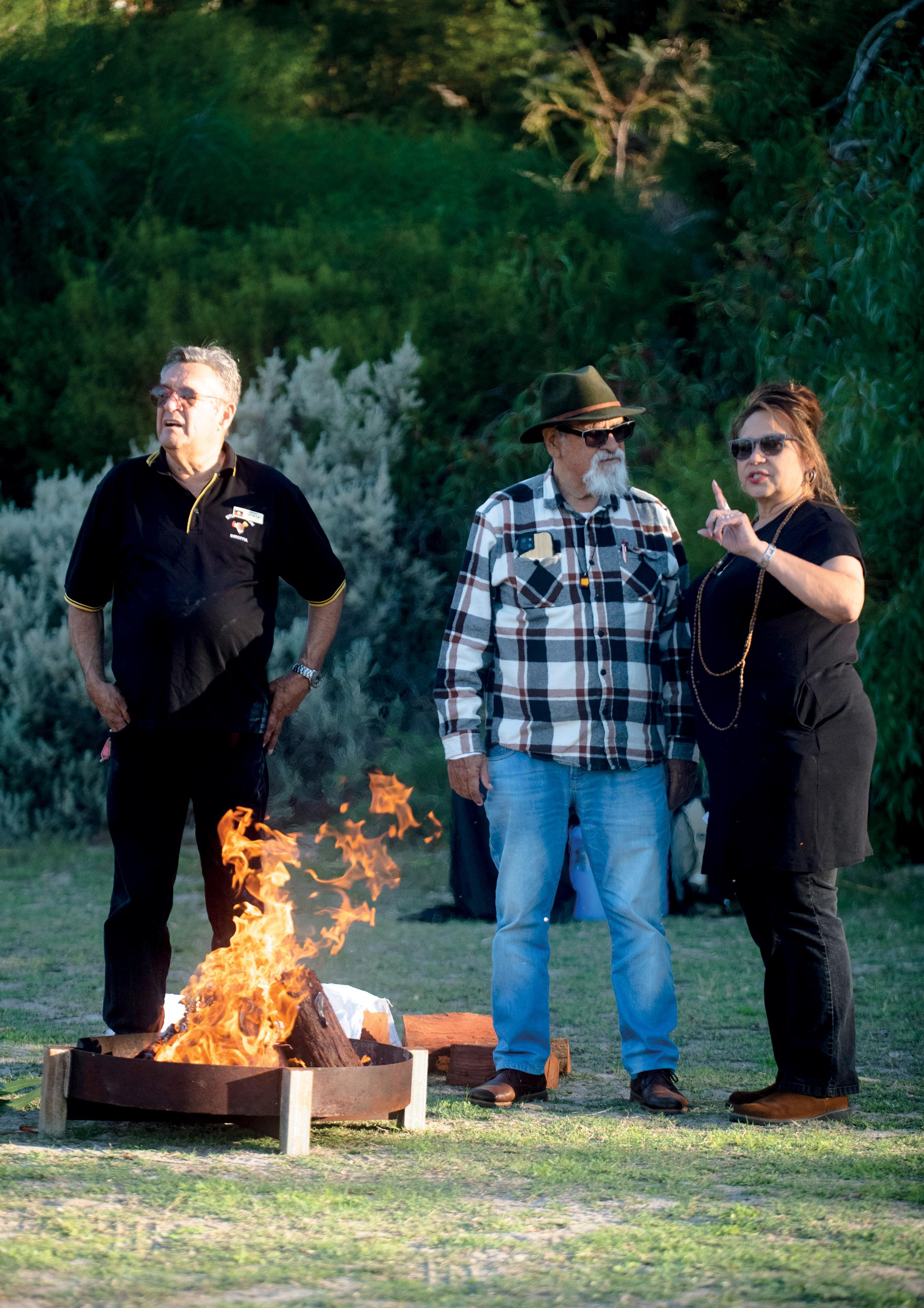 By Tess Macallan, Journalist, Council Magazine
By Tess Macallan, Journalist, Council Magazine
For more than a decade, the City of Melville has been working with Whadjuk Traditional Owners and Elders, and the community, to develop a plan to revitalise the Goolugatup Lowerlands. The City recently held a public program that showcased project designs and illustrated how input from Indigenous communities can play a pivotal role in guiding the maintenance and design of public spaces, supporting the preservation of culture, history and the environment.
Situated to the south of Perth and bordering the Derbarl Yerrigan (Swan River), the Goolugatup Lowerlands hold significant cultural and spiritual value for the Whadjuk Noongar people.
The area is on the river foreshore and encompasses a flat and de-vegetated parkland, including a pocket of wetlands that is thought to mark the original water’s edge prior to 20th century land reclamation.
Goolugatup is associated with the Waugal water spirit – a central figure in Whadjuk spiritual beliefs that is believed to reside in the river and underground waters, imbuing the waterways with profound importance.
For the Whadjuk Noongar people, the site was sacred ground, a key site of learning and initiation.
Goolugatup was also used for hunting, camping and meeting. Noongar Elders have noted that the area was also utilised as a lookout point by Midgegooroo and Yagan, who were prominent leaders of Noongar resistance to European settlement.
Goolugatup was one of the landing and camp sites of Captain James Stirling during his survey of the river in 1827. The area was named Point Heathcote after
one of his crew members and initially used by settlers for grazing cattle. In the 1920s it became the site of a mental health facility, which closed in 1994. Following strong community sentiment, the City of Melville commenced discussions with the Western Australian Government to restore the site for public use and the land became part of a heritage precinct of conserved and reused buildings.
In the current revitalisation project, the significance and history of Goolugatup will continue to be recognised. Community members are coming together and understanding the land’s history.
As Australia continues its efforts towards reconciliation, councils can play an important role by actively engaging Indigenous communities in urban development planning.
For the City of Melville, the Goolugatup Lowerlands project embodies this endeavour. Following 12 years of work and consultation with Traditional Owners and Elders, the community and key stakeholders, the City is transforming the site into a community and recreation space that celebrates reconciliation, culture and heritage.
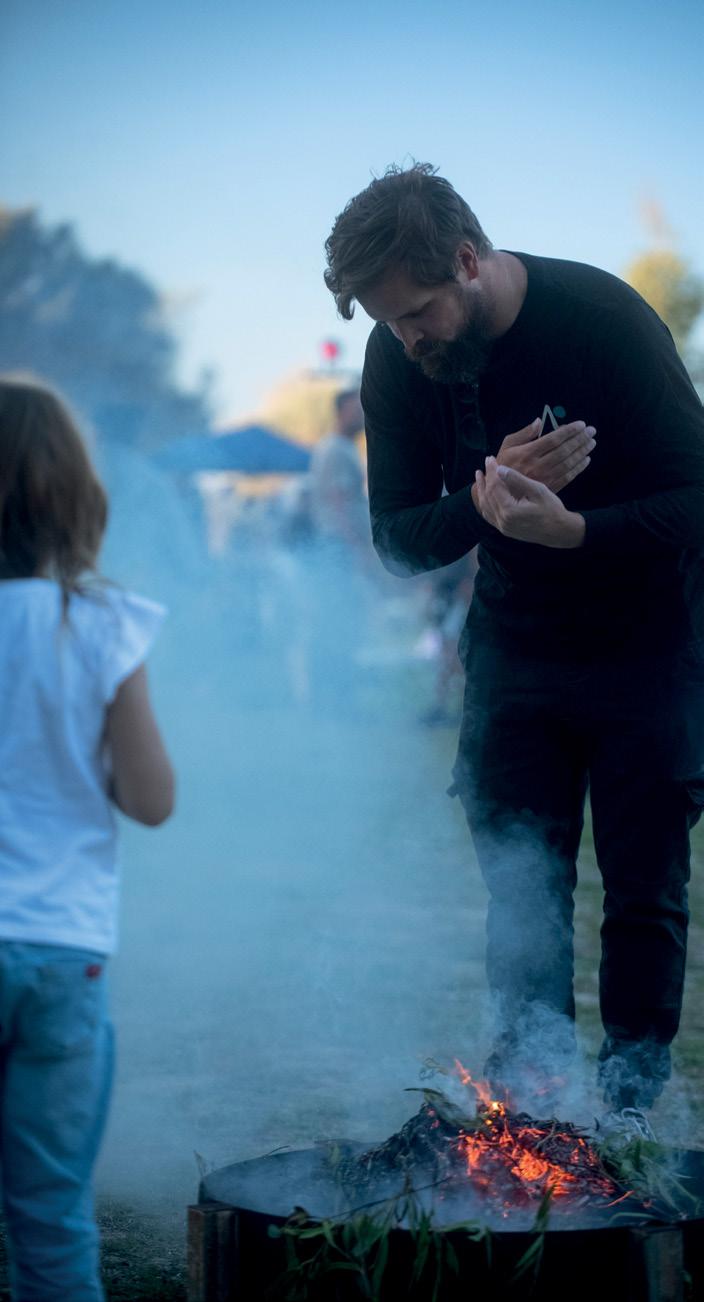

The revitalisation will reconnect Goolugatup Lowerlands with the cultural and heritage precinct Goolugatup Heathcote, through landscape and interpretation design.
City of Melville Mayor, the Hon. George Gear JP, said the Goolugatup Lowerlands renewal project was an exciting community-driven initiative with a long history of consultation.
“This is a project that has reconciliation at its heart, with the Whadjuk Traditional Owners and Elders collaborating and guiding its development,” Mayor Gear said.
At the Goolugatup Heathcote Collections Gallery and AH Bracks Library and Creative Space, exhibition visitors were shown new designs alongside stories about how culture and history came together in the creation of the plans.
The enhancements include a range of features such as new barbecues, an outdoor kitchen, a large stairway with landing lookouts, yarning circles, healing gardens, seating, toilets, lighting, planting and cultural storytelling through signage and trails.
“As this project develops, we are looking forward to creating new places for families and friends to gather and cook barbecues, learn about the history and culture of the site, and enjoy our unique plants and animals on the banks of the river,” Mayor Gear said.
To celebrate the project, the Whadjuk community, City staff, residents and the wider community came together for a smoking ceremony, accompanied by storytelling, music and the design reveal. More than 250 people attended Karla Boodja Bilya Djinda (Fire Land Water Stars) on Saturday, 20 May 2023, kicking off a public program that ran throughout May and June, which included a design reveal exhibition and talks on the history of the site.
“We are delighted to be a step closer in the revitalisation of this special site to fulfill its enormous potential,” Mayor Gear said.
“It is an example of how we’re working to meaningfully support ongoing reconciliation in action.”Kobi Morrison’s songs delighted young fans. Whadjuk author Alton Walley wowed young and old with stories by the campfire.
For many councils, environmental concern, asset downtime (closed roads, bridges and roadworks) and infrastructure costs are key pain points, with many community complaints a result of damaged roads.

The increase in extreme weather has also made these challenges more intense, with road damage a critical issue in many communities, leaving their council’s to decide – do they attempt to remediate these assets, or create community and environmental disruption and start from scratch.
Population growth is also a growing concern for councils, increasing pressure on existing infrastructure assets.
To address these pain points and reduce costs, waste and environmental impacts, employing non-invasive, economical asset repair and preservation solutions is critically important.
Ground engineering and asset preservation specialist, Mainmark, has been a trusted partner and support for Australian councils for almost 30 years, providing innovative low-impact solutions for asset rehabilitation instead of replacement – reducing costs and use of resources.
Mainmark uses the state-of-the-art engineered resin solution, Teretek®, to remediate assets with minimal disruption to the surrounding community and environment – proactively fortifying assets for future conditions.
Some aspects of society never waver, like local government’s commitment to community sustainability and safety –both of which are key factors of road maintenance. Since 1995, the years have ebbed and flowed for ground-engineering experts Mainmark, but one thing has never changed – their commitment to sustainable, non-invasive and future-ready maintenance.
Teretek® is a non-invasive technology that provides void filling, re-levelling and ground improvement solutions that remedy many challenges councils face.
Maintaining infrastructure assets is crucial for public safety and can be an expensive process for local governments, especially as infrastructure ages and the cost of repairs increases.
The main benefit of Mainmark solutions is that they are of a non-invasive surgical nature compared to traditional methods, and the work can be completed quickly, meaning there’s less disruption to communities.
Leveraging low-impact technologies to repair or maintain infrastructure is one way councils can support a better quality of life in their locality.
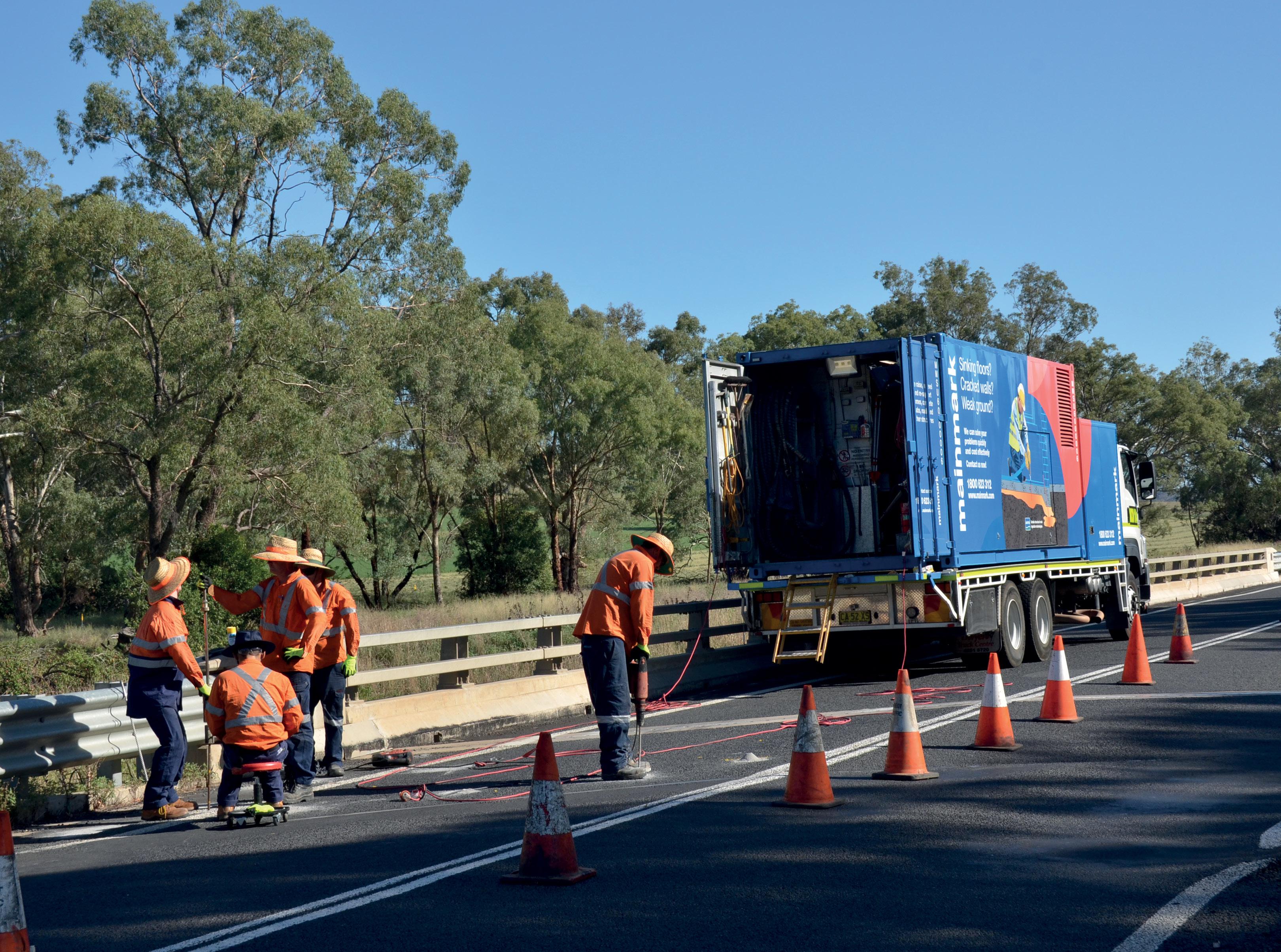
Mainmark’s solutions can remedy a variety of assets, focusing in on the below:
• Roads
• Bridges
• Culverts
• Public buildings/assets
• Heritage assets
∞ Fast: Our solutions have fast curing times compared to traditional repair methods.
∞ Environmentally inert: the inert material that is used is non-toxic and does not leach into the environment or affect the treated area.
∞ Immediately trafficable: as soon as the repair is completed, the area can be reopened to traffic and full use.
∞ Non-invasive: repairs are performed without the need for excavation and extensive disruption.
∞ Cost-effective: compared to traditional methods, these solutions are more cost-effective.
Since 1995, Mainmark has been making local government’s maintenance needs as simple as possible, so councils can prepare for the future, the smart way.
Aprecast headwall is a premanufactured concrete structure designed to be installed at the outlet of drainage systems, culverts, ditches, and other water management facilities. Its primary purpose is to control and manage the flow of stormwater runoff, helping to prevent erosion, reduce flooding, and ensure the integrity of surrounding infrastructure.
Precast headwalls are fabricated off-site in controlled environments, ensuring high-quality production and reducing construction time on-site. Their modular nature allows for quick and easy installation, significantly expediting project timelines.
Precast headwalls are manufactured using high-quality concrete and reinforcement materials, making them highly resistant to the forces of nature, corrosion, and wear over time. This longevity translates to reduced maintenance costs and long-term benefits for the surrounding environment.
Precast headwalls are an eco-friendly choice, as their production generates minimal waste and they have a lower carbon footprint compared to traditional construction methods. They also contribute to improved water quality by efficiently managing stormwater runoff.
Precast headwalls are often installed at the outlets of culverts, stormwater pipes, and open channels, effectively controlling the flow of water and preventing erosion in drainage systems.
Along riverbanks, shorelines, and coastal areas, precast headwalls serve as erosion control structures, protecting soil and preventing land loss due to water currents.
These headwalls can safeguard bridges, embankments, and other critical infrastructure from the erosive forces of runoff water, extending the lifespan of these structures.
Precast headwalls can be equipped with features such as sediment basins and trash racks, which help to trap debris and pollutants, thereby enhancing water quality downstream.
By efficiently directing and dispersing stormwater runoff, precast headwalls contribute to reducing the risk of flooding in urban and rural areas.
The integration of precast headwalls into modern construction practices represents a significant leap forward in the field of civil engineering and water management.
With their myriad benefits, including efficiency, durability, and versatility, precast headwalls are becoming an essential component in projects aimed at effective stormwater management, erosion control, and infrastructure protection.
As sustainable construction practices continue to gain traction, precast headwalls stand out as a prime example of how innovation and technology can work together to address critical environmental challenges.

In the realm of civil engineering and infrastructure development, precast concrete technology has revolutionised the way we approach construction projects. One remarkable application of this technology is precast headwalls, which play a crucial role in managing stormwater runoff, preventing erosion, and protecting water quality.
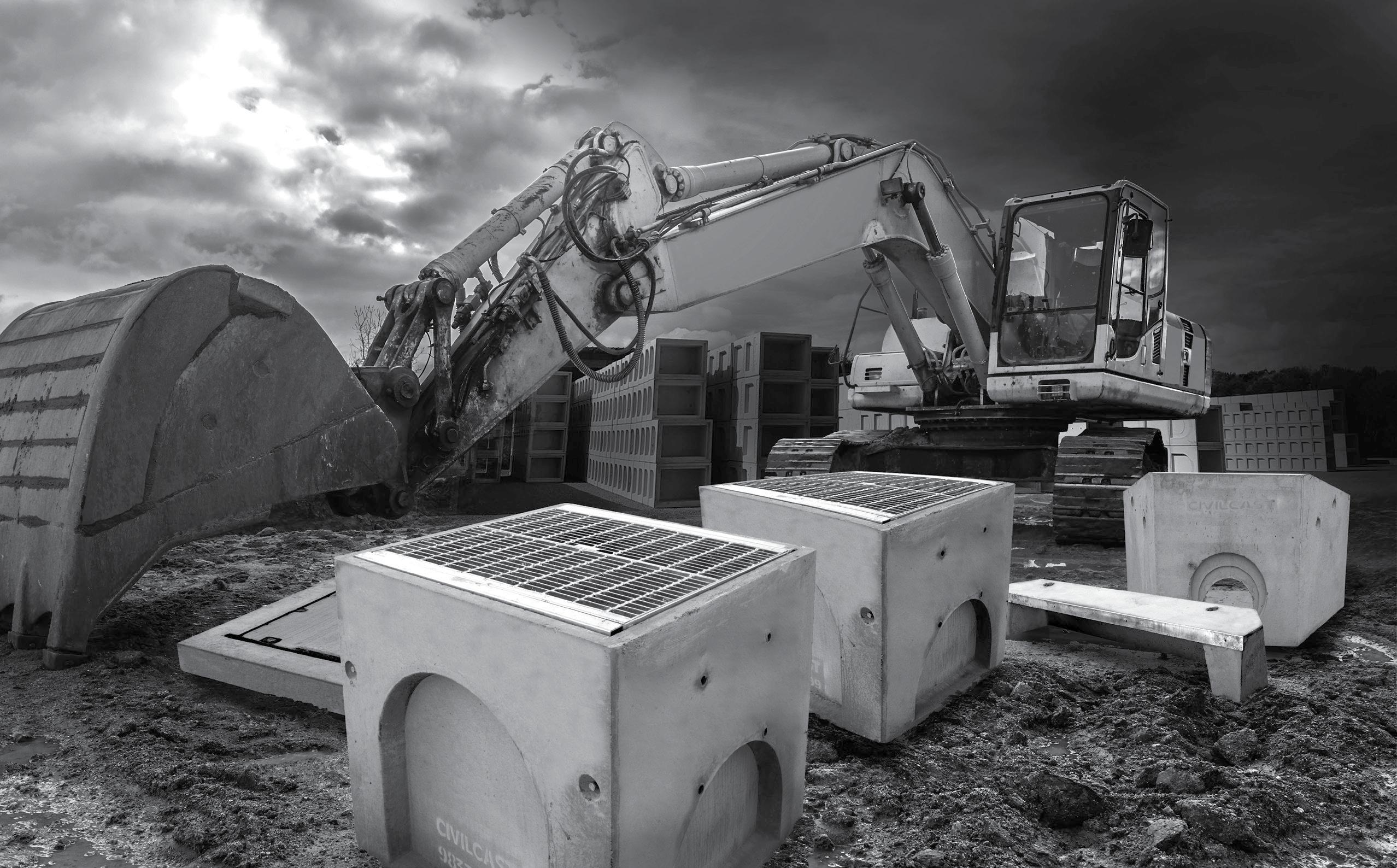






As the housing pressures continue to affect communities, Mount Alexander Shire Council Mayor, Rosie Annear, shares how her council has brought together councillors and community to deliver solutions to provide affordable and safe housing.

 By Mayor Rosie Annear, Mount Alexander Shire Council (Castlemaine Ward)
By Mayor Rosie Annear, Mount Alexander Shire Council (Castlemaine Ward)
OShire Council, is the power of alignment.
Alignment between Councillors, Council and the community has enabled us to work collaboratively, to try new things, and to explore exciting projects. It’s this alignment that is giving us the best chance possible to help address the housing pressures in our community, making genuine and lasting change.
One of the most important things that Council has done to address our shire’s housing crisis is appoint a Housing Solutions Broker.
Since their appointment in 2021, the Housing Solutions Broker’s work has led to the progression of several initiatives. We are one of only two regional Councils in Victoria to have a role like this, and it has been invaluable.
Council has identified two sites in the centre of Castlemaine that are suitable for affordable housing. After a unanimous decision, Council is progressing plans to develop these sites into medium density affordable housing which will offer 42 new apartments for our community.
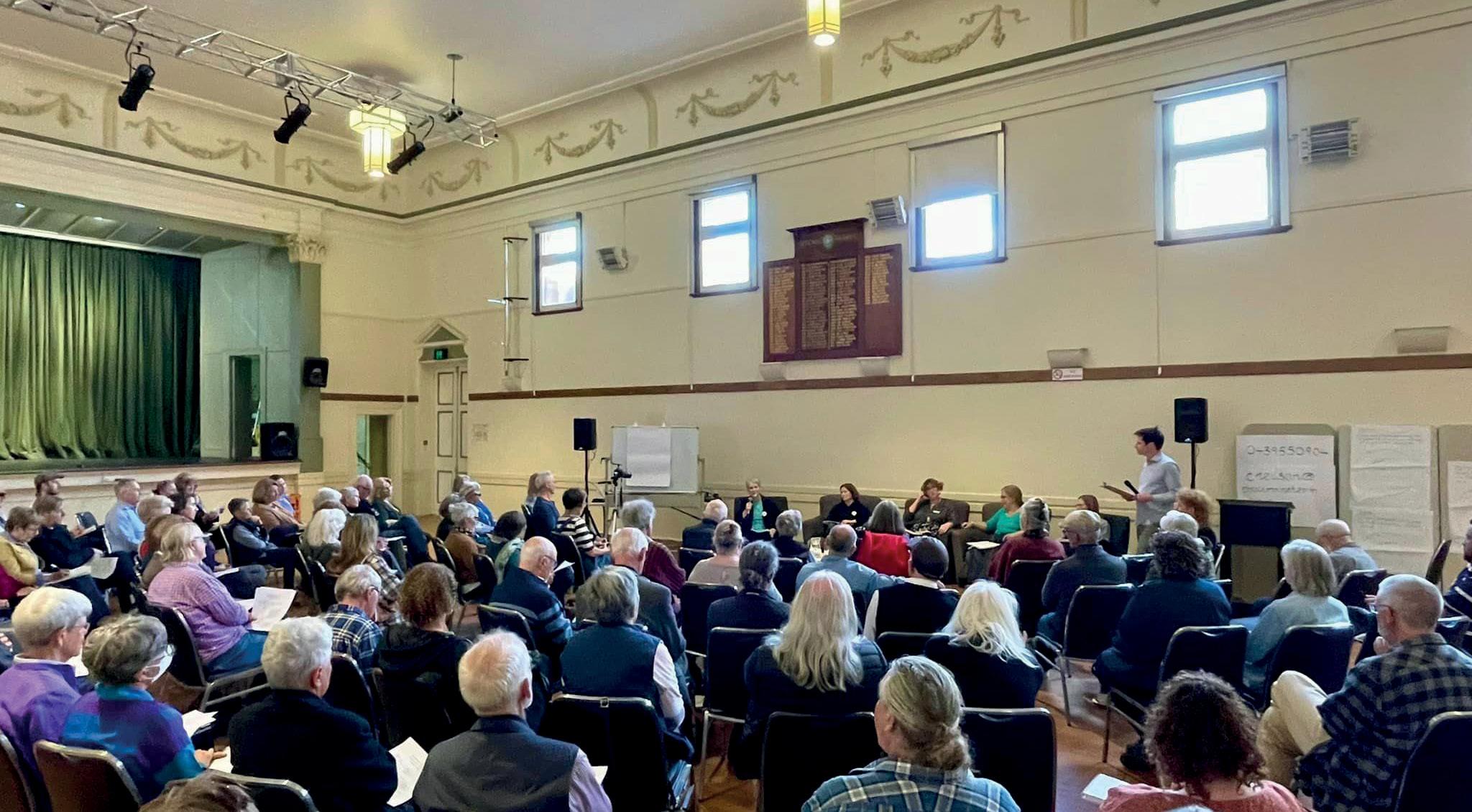
we are pursuing with the state, to use for social and affordable housing.
One major struggle we are facing when it comes to funding housing projects is that we are ineligible for many government funding streams.
Again and again, we stress to politicians that there is a big difference between regional and rural areas, and that they need to be funded differently.
affordable, social or otherwise –
Several years ago, as the housing crisis worsened, with rentals becoming scarce and an influx of people escaping the city, affordable, safe, secure, and sustainable housing in our shire, and the resulting impacts of housing insecurity and homelessness.
It’s now coordinated out of Dhelkaya Health, our local health service, and comprises community members with lived experience, as well as those with experience and expertise in the housing sector, community organisations, and housing and health organisations.

This group is highly engaged, active and empathetic, and is currently working on a number of innovative initiatives.
From their inception, a key piece of advocacy work that My Home Network championed was to make it easier for people to live in tiny homes on wheels – a practical solution in the wake of dwindling housing opportunities.
Council listened, and proposed changes to Local Law 13, which relates to camping on private property. There was an overwhelmingly positive response from our community to the proposed amendment – over 1,600 submissions, our largest engagement to date – with 91 per cent of submitters supportive of the changes.
In June 2023, Council unanimously voted to amend the local law. This change means that people can now camp, or use caravans or tiny homes on wheels, on privately owned land where there is an existing dwelling without the need for a permit.
The decision was met with support and gratitude from the community. Council recognises that while this change won’t solve the housing crisis, it provides another option for people in need of temporary housing.
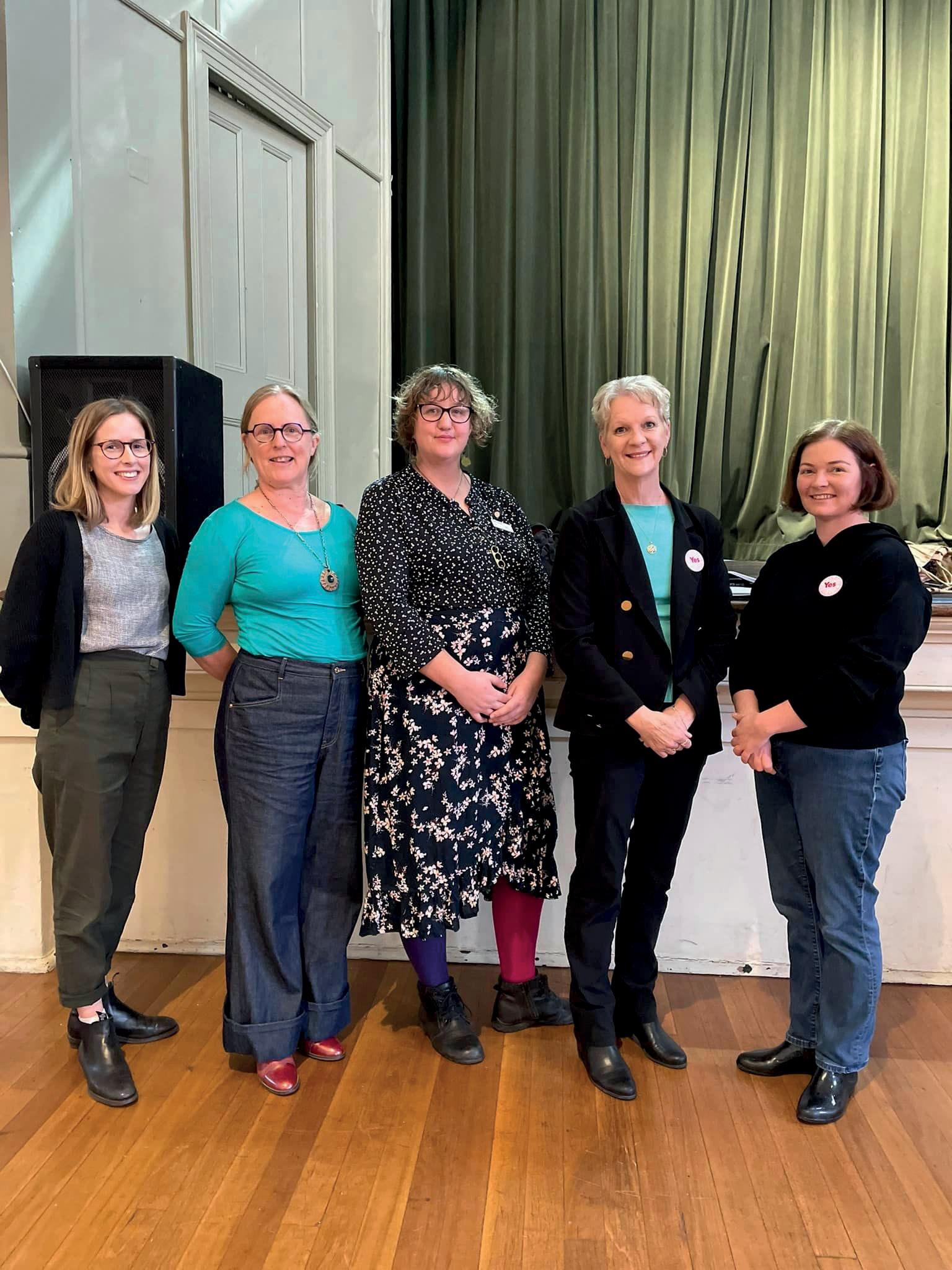
One last initiative, that Council will soon consider, is establishing a charitable trust for affordable housing. If established, this trust will exist independently of Council and will be overseen by a Trustee and informed by a delegated advisory committee of Council. Its sole purpose would be to provide affordable housing in Mount Alexander Shire, in perpetuity.
An indicative initial capital base of $3 to $5 million has been identified to make the appointment of a Trustee and operational commencement feasible. If the proposed Trust Deed is adopted, a fundraising campaign will begin, seeking pledges for donations of funds or assets to the Trust.
This is perhaps one of the most exciting initiatives we’re pursuing as, if successful, the Trust will be selfsustaining and long-lasting, growing a body of land and housing in the shire, and building permanent protections against the kind of shocks we’re experiencing now. Watch this space!
Finally, as the housing crisis continues, we’re noticing more visible homelessness and rough sleeping in our shire than we’ve ever experienced. But anecdotally, we know that what we’re seeing is just the tip of the iceberg.
The number of people living on the brink of homelessness or in unsafe or unsuitable accommodation is rising rapidly. Not doing anything is not an option.
Subsequently, our Director of Corporate and Community Services produced a piece of work that mapped all homelessness services offered in our shire. It includes shower vouchers, soup kitchens, free laundry services, mental health support and housing options.
This piece of work has been incredibly informative and has also given us a much clearer picture of what is needed.
Council is now exploring ways to help coordinate existing services, as there are many duplications and gaps. Mount Alexander Connectors Network (a fantastic group of local organisations led by Council) will take up this task, with a possible short-term position within Council in support. Again, watch this space.
I hope this has given you a taste of the ways our small Council and community are working together to address the housing crisis in our shire.
Stepping into the housing space as Council has required creativity, curiosity, courage and empathy – plus that alignment between Councillors, Council and community, which I believe is the strongest ingredient of all.
For more than 20 years Pipeline Plant Hire’s VacLift equipment has been the gold standard for safety and efficiency on Australian water pipeline construction projects. Director, Gerard O’Brien, and business partner Global Pipeline Equipment’s Mat Dridan explain why.

“Australia is home to some of the driest inhabited areas on the planet, which makes access to safe and reliable water supplies vitally important, especially for remote communities,” Pipeline Plant Hire’s Director, Gerard O’Brien, said.
As existing pipelines are expanded, transportation of large volumes of water over greater distances with minimum evaporation loss plays an increasing role in supporting Australia’s future, and Pipeline Plant Hire’s expertise more in demand than ever.
One example of this is the Wentworth to Broken Hill Pipeline, a project that saw Pipeline Plant Hire’s unique VacLift equipment achieve a record-breaking rate of pipe laying.
“Our vacuum pipe handling equipment creates distance between the workers and the pipe, reducing the risk of injury and dramatically improving the cycle time for each pipe movement, and
that in turn enables our customers to complete their work faster without compromising on safety,” Mr O’Brien said.
VacLift works by using a vacuum to suck pipe lengths into the grasp of an attachment fitted with rubber seals called a ‘shoe’ that raises lengths of poly or steel pipe weighing up to 15t, without causing damage during the lifting process.
Mr Dridan said that this results in enormous time and cost savings for customers, as the VacLift cycle time is under 40 seconds per pipe length, whereas conventional methods take between five and ten minutes.
The VacLift system is available for customers to hire as a fully integrated, ready-to-use system consisting of an excavator, fitted with a VacLift unit and mounted on the counterweight of the machine – to provide maximum safe lift capacity.
“We’ve also developed a VacLift attachment that can be fitted to the customer’s own machine using auxiliary hydraulics to power and control operations,” Mr Dridan said.
“Since the equipment has been designed to only lift or release the pipe lengths in a grounded position, it’s almost impossible to drop the pipe, and also safeguards any personnel involved, and protects the lifting equipment.”
Traditional methods of pipe handling put workers at risk when attaching and detaching slings and hooks, but VacLift significantly reduces the dangers involved.
“Removing workers, slings and hooks from the process allows the
VacLift operator to lift and, for water pipelines, lay the pipe themselves,” Mr O’Brien said.
“We’ve invested millions of dollars in making pipe handling safer and in doing so we’ve enabled tens of millions of safe pipe movements, without so much as a paper cut attributed to our equipment.”
Pipeline Plant Hire has a wide range of equipment, providing everything from buckets, rock breakers and augers, to material adaptors, beams and shoes.
“All our equipment is designed and manufactured in Australia. Our range includes small units used to feed poly pipe, fusion welding machines lifting hundreds of kilograms each, and large units capable of lifting large diameter, high pressure steel pipe at weights that exceed 12 tonnes,” Mr Dridan said.
“With the combined development of our rear mounted vacuum lifts, patented throughput of vacuum at the rotator, expanded range in pipe diameter per shoe and many other proven technical advantages, we’ve contributed massively to efficiency gains in the pipeline industry.”
As a leading supplier of plant machinery and construction services, the company has been providing long term solutions to Tier 1 companies and civil clients for over 30 years and is looking forward to setting the benchmark for many years to come.
“Working with manufacturers, suppliers and customers, we continue to provide improvements and innovations wherever we can, and there’s plenty more in the pipeline,” Mr O’Brien said.
The PL1500 is a gamechanger for pipeline construction. The unique, quick-hitch, vacuum lifter attaches to your existing excavator, reducing your machine hire cost and getting things moving fast. Capable of safely lifting 15,000kg, the heavy-duty, self-contained unit can handle all types and lengths of pipe. It integrates seamlessly

with the host excavator, using the main controls and hydraulics to operate the vacuum lifter. Plus, built-in smart tech ensures it’ll only pick up or put down a pipe on a solid surface. That’s safer than many other vacuum lifters on the market. To find out more, speak to the Pipeline Plant Hire team today.

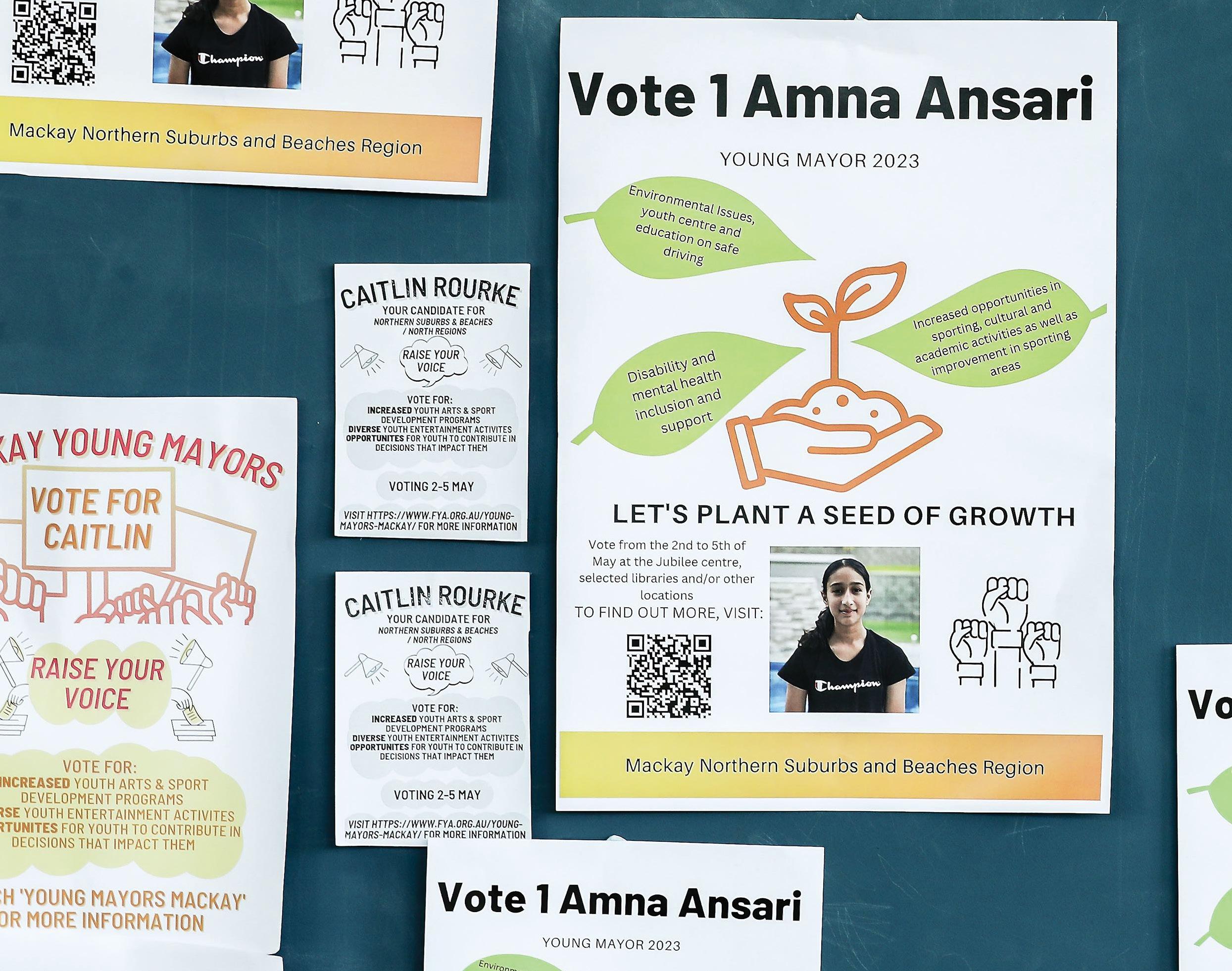 By Kody Cook,
By Kody Cook,
The decisions made by local governments affect the lives of all Australians. Despite this, young Aussies are commonly under-represented in their councils, typically taking on an advisory role, if any at all. That’s why the Young Mayors Program is giving young people across Australia the platform they need to make real, lasting decisions for their communities, and future. Council Magazine had the opportunity to speak with the Young Mayors Program Director, Tahlia Azaria, about the benefits of having a fresh perspective in the chambers.


The Young Mayors Program is run by the Foundation for Young Australians – which backs young people to beat social injustice and create long-lasting change in their communities – and provides young people between 11 and 18 years with the opportunity, mentoring and resources to run campaigns and projects in their local areas.
The councillors then serve for a 12-24 month term, cooperating with their local government to run events, fund projects and drive positive change.
Across the world, thousands of youth have taken part in the program, electing young councillors to create policies and decisions that better reflect the needs and concerns of the future generations.
After its success overseas, the program will be delivered in Australia in partnership with the University of Melbourne’s Melbourne Centre for Cities, and is supported by the Victorian Government Department of Families, Fairness and Housing through the Engage program.
The program will be piloting in Australia across six local councils over the next few years. Elections for young councillors have already taken place in Mackay and Horsham, with elections in Wollongong to take place in September, followed by Cairns in October. The remaining two councils to pilot the program are still to be selected.

The Young Mayors Program Director, Tahlia Azaria, said that the program is trying to shift the way that local government engages with young people from advisors to decision-makers.
The program supports young people to nominate themselves to run for election to their local youth council. It then provides them with the resources and support to run their campaigns, before going to election in each local government area, where people under the age of 17 can come out to vote for the people that they would like to represent them on the youth council.
“Once that youth council is elected, they will nominate their own mayor and deputies, and they will set off on their term in office,” Ms Azaria said.
Because the young councillors are democratically elected by their peers, they are required to regularly consult with their constituents to make sure a diversity of views are heard.
The Young Mayors Program centres young people in decision-making, so they are not only sharing their views, but delivering their priorities through running campaigns, projects and events.
“They put together a priority agenda based on what they've heard from their constituents, other young people in the community, and what issues they'd like to address, and then with a $10,000 fund, they can bring those ideas to life.”
Ms Azaria explained that one of the program's major goals is to help young people understand the functions and processes of their governments and councils.
“Young people have told us – and they've told governments at every level – that they would like to learn more about democracy, so this process creates that experience for them.
“They will get to hold a ballot paper, understand what it means to research their representatives or the candidates, walk into a polling place, cast their vote, understand what preferential voting is (as an example), and elect young people to represent them.
“It’s creating a pathway for these young people to experience democracy like that before they turn 18, so that once they do turn 18 they really understand what it means to exercise the right to vote.
“We hope it means that we will see a higher rate of young people in that 20 to 25 age bracket voting, because they already know what it means and how to do it before they are 18.”
Ms Azaria said that another objective of the program is giving young people a platform to make meaningful decisions that affect their own communities and lives, and to help them gain experience in decision making roles.
“Our aim is for this program to give young people that opportunity to be making more decisions, and we'd really like to generally give young people the experience of local government, and to understand the role that local government plays and the difference between local, state, and federal government and how they, as young people, can influence the system to create a better region for their communities.”
Ms Azaria explained that the young councillors are allocated $10,000 in funding to help bring their ideas to life.
“They also have a staff member who is dedicated to supporting them, to help guide them through all of the council's processes and how they can influence change, and support them on things like how to develop a project brief and how to develop a budget.
“We have a whole range of tools and guidance for the youth councils to help them on their way.
“We are really trying to shift the dial on young people being positioned as decision-makers rather than advisors.”
Ms Azaria hopes the program may promote change within the councils themselves, making them more willing to support young people in making decisions.
“We're really looking forward to seeing how councils will embrace that and, for example, welcome youth councils into quarterly briefings to provide recommendations on what they see needing to change and to be able to put some of their own funds towards making that change.”
Ms Azaria said the program will help all young people see what is possible for them, to see that they can make valuable contributions to their communities.
“If you give them a platform they can lead to some really outstanding results, so I hope it will be inspiring for all young people. I also hope it will give each of those individual young people who get to vote that chance to learn about democracy, and give the youth councillors themselves that opportunity to learn about civic engagement and serving the community.”
When asked about her thoughts on lowering the minimum age to vote in Australia, Ms Azaria said that the Foundation for Young Australians is backing the Make It 16 campaign, which is a group of young people who are advocating for lowering the minimum voting age to 16.
“Because if you're able to drive a car, to work, to pay tax, and to serve in the defence force, you should be able to also vote for the government that runs all of those services, so yes, I do think that young people should be able to vote before they turn 18.”
While its early days in Australia – with the first two youth councils having only just been elected – Young Mayors has already seen a great deal of success overseas, with youth councils undertaking a number of important projects in the UK.
In Oldham, a youth council ran an award winning road safety education campaign, hosting workshops, designing advertising, installing speed cameras, and even producing a play.
Ms Azaria shared an example of one youth council from Bristol, which stood out to her.
“There was a particular council that had, in their local government area, breakfast clubs through schools for young people in the schooling system.
“When it came to holiday time, those young people would go hungry, so the youth council then put together a proposal to extend the breakfast club into school holidays so that no young person would go hungry, no matter what day of the year it was.”
Ms Azaria explained that projects like this, that have been the catalyst for positive community changes, have led her to expect some innovative ideas from young people in Australia as well.
“It's very early for our pilots, so we're not quite there yet. We've only just elected our first two councils, but already they're talking about issues like road safety and safety at outdoor spaces like skate parks.
“I guess time will tell.”
Noise pollution can have a detrimental impact on health and wellbeing, with the potential to cause stress, reduced concentration, productivity loss, communication difficulties, and fatigue from lack of sleep. Additionally, among the more serious effects are cardiovascular disease, cognitive impairment, tinnitus and hearing loss.
Noise pollution is a common safety risk that requires protective measures in the workplace, and is also a common cause of complaints from within the community. So it’s in a council’s best interests to ensure their landscaping and cleansing equipment fleets not only tick the sustainability box, but also minimise public disturbance.
Noise pollution, and the resulting noise complaints, are a significant challenge for councils, particularly when it comes to maintaining high-density residential areas – nobody wants to be woken by a noisy diesel street sweeper at 3am.
Noise is such a common complaint that each council typically has their own reporting and resolution process, taking up council resources and time.
The equipment operated by workers in landscaping and maintenance of council infrastructure, parks, community centres and other public spaces, commonly produces excessive noise output. This has led to implementation of time restrictions in many local government areas, limiting when works may be performed.
A further consideration when working with noisy equipment, is the resource and energy associated with the provision of adequate hearing safety protection.
For councils, electric maintenance vehicles are a solution to the age-old issue of noise complaints, whilst also promoting safer work practices, and reducing emissions at the same time.
The World Health Organisation (WHO) released a report in 2011 that had collected data on environmental noise and found that while other forms of pollution are decreasing, noise pollution is not. The study concluded that over one million healthy years of life are lost annually to noise-induced health problems.
ICE (Internal Combustion Engines) vehicles and equipment are known to produce excessive noise, and the effects are felt by residents and council workers alike. Whereas electric fleets operate considerably quieter and minimise public disruption. Deploying electric equipment and vehicles when carrying out landscaping and maintenance work is one simple solution that can reduce noise and air pollution, providing a sustainable alternative that is gentle on the ears.
EcoTeq is leading the way in Australia by providing 100 per cent electric outdoor landscaping and city cleansing equipment for businesses and councils.

EcoTeq’s electric equipment operates at less than 80 decibels across the entire range of street sweepers and commercial ride on mowers (or even lower). Safe Work Australia regulations state that workers must not be exposed above 85 decibels (as an average) over eight hours, without adequate hearing protective measures.
While EcoTeq’s equipment operates below this threshold, hearing protection is still recommended for extended use.
Emitting such a low volume of operational noise, EcoTeq’s range is much less disruptive in built-up residential or tourist areas. This means mowing and pavement sweeping can be performed during off-peak times, without the risk of waking sleeping community members – and without the risks associated with operating equipment around pedestrian and vehicular traffic.
Low-noise operation enables councils to work extended hours of operation. For example in Spring when both the daylight hours and the grass is getting longer, maintenance teams have the option to start mowing earlier and finish later, to help councils get in front of the heavy growth season.
Switching from ICE to electric-powered vehicles and equipment offers a safe and sustainable means for councils to keep cities clean and beautiful, without the production of unreasonable and disruptive noise.
When most people think of green solutions, they think of low-emission technology to reduce air pollution and the effects of climate change. However, there is another harmful form of pollution not to be overlooked: noise.



HOW CITY OF VINCENT IS SIMPLIFYING THE APPROVAL JOURNEY FOR SMALL BUSINESSES
The City of Vincent – nestled in the suburbs of Perth – is committed to growing local businesses, unveiling multiple improved webpages to help entrepreneurs bring their small businesses to life.

Following the pandemic many small businesses took a hit, with many still on the long term road to recovery today.
To aid in this process, the City of Vincent is hoping to boost its local economy through the introduction of new online resources for young entrepreneurs and business-owners.
The newly launched three webpages, found on the Council’s website, feature easy-to-understand information, frequently answered questions (FAQ) and interactive tools.
The Before you sign a commercial lease page has FAQs around what is a lease, whether the proposed land use is a permitted use and which approvals are needed to run a business.
Real estate agents can also access the Information for real estate agents to support small business page, which includes details on how to find a property's zoning and previous approvals and when development approval is required for a change of use application.
The Step by step approval process page has a comprehensive roadmap that summarises the essential steps for business owners to get the approvals needed.
This initiative was a key outcome from Council’s participation in the Small Business Friendly Approvals Program, run by the Small Business Development Corporation.
“We understand that it can be quite daunting to start a new business or take over an existing one,” City of Vincent Mayor, Emma Cole, said.
“At Vincent, we are open for business and are doing what we can to support local entrepreneurs and small business owners in their approvals journey.
“Our staff members from planning, building, health, communications and governance teams have worked together to form these new webpages to make the lives of small business owners and real estate agents easier.
“From permits and licenses to inspections and compliance, we have also come up with a roadmap of a step-by-step approvals process which acts like a simple guide for people to follow.”
The roadmap includes a step for Public Space Activation, which outlines the eleven different ways businesses could use the surrounding streetscape to activate their business.
These include alfresco dining, street entertainment, street furniture, parklets, eatlets and more.
“Our town centres are full of parklets, alfresco dining and street furniture, which are all loved by our locals and visitors,” Mayor Cole said.
“We encourage business owners to think outside the box to utilise our streets, town centre parks, and civic squares to engage customers and enhance the streetscape.”
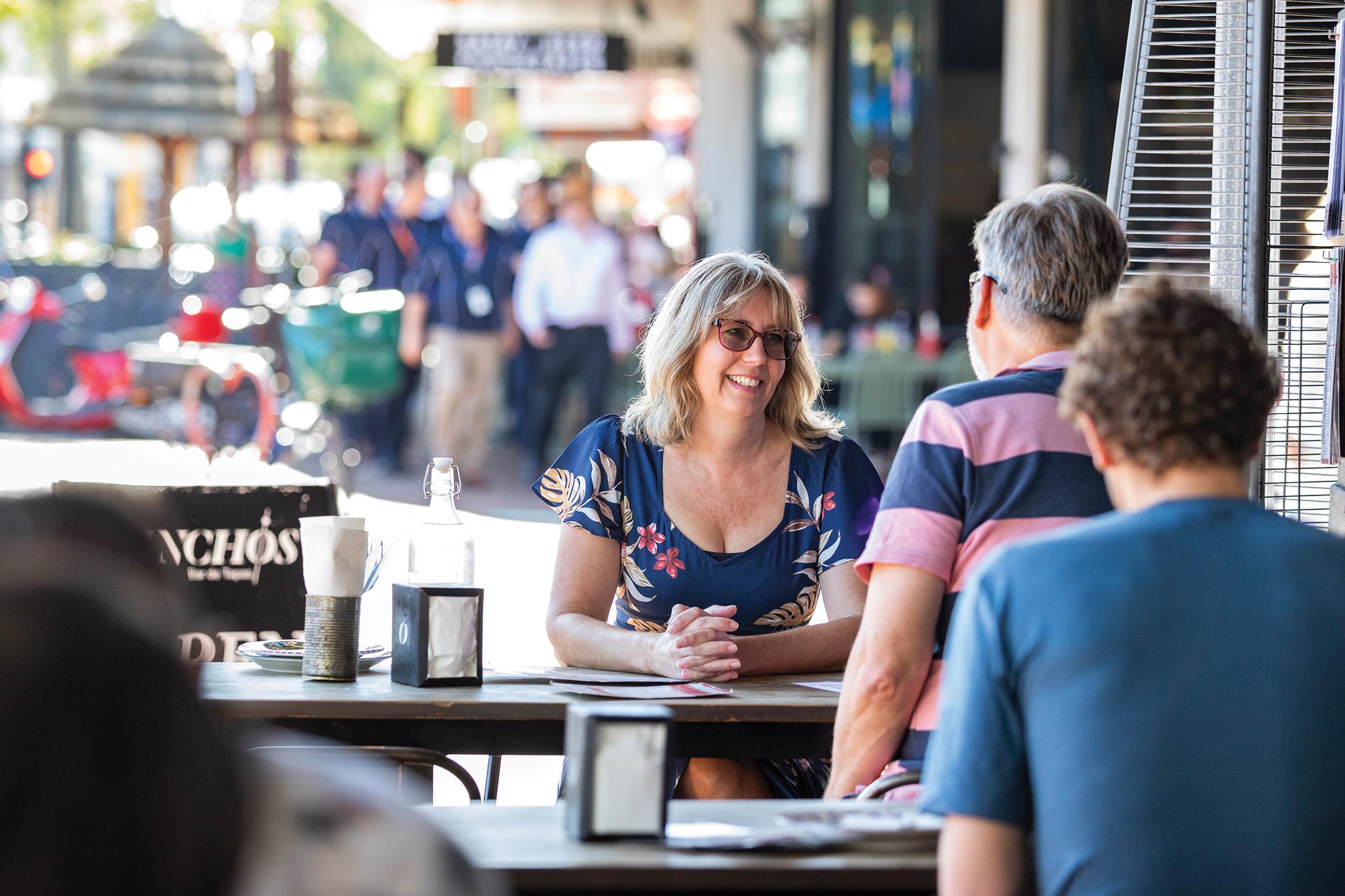
In an innovative trial, Sunshine Coast Council is testing the capabilities of mapping and AI technology as part of environmental conservation efforts to tackle the spread of invasive plants along the coastline. With the trial still underway, Council is navigating constraints and encountering discoveries, which hopefully promise a new way to understand how to protect native ecosystems.
Although scattered with uniquely beautiful ecological sites along its coastlines, Sunshine Coast Council is routinely dealing with invasive plants that have spread out of control. In an effort to combat the destruction of native flora, Council initiated the Invasive Weeds Project, which aims to trial three mapping technologies to detect invasive plants in the area.
The first stage of the trial involved Aspect UAV capturing images using a drone and the second stage involved a partnership with Queensland University of Technology (QUT) to train artificial intelligence (AI) to recognise the invasive species.
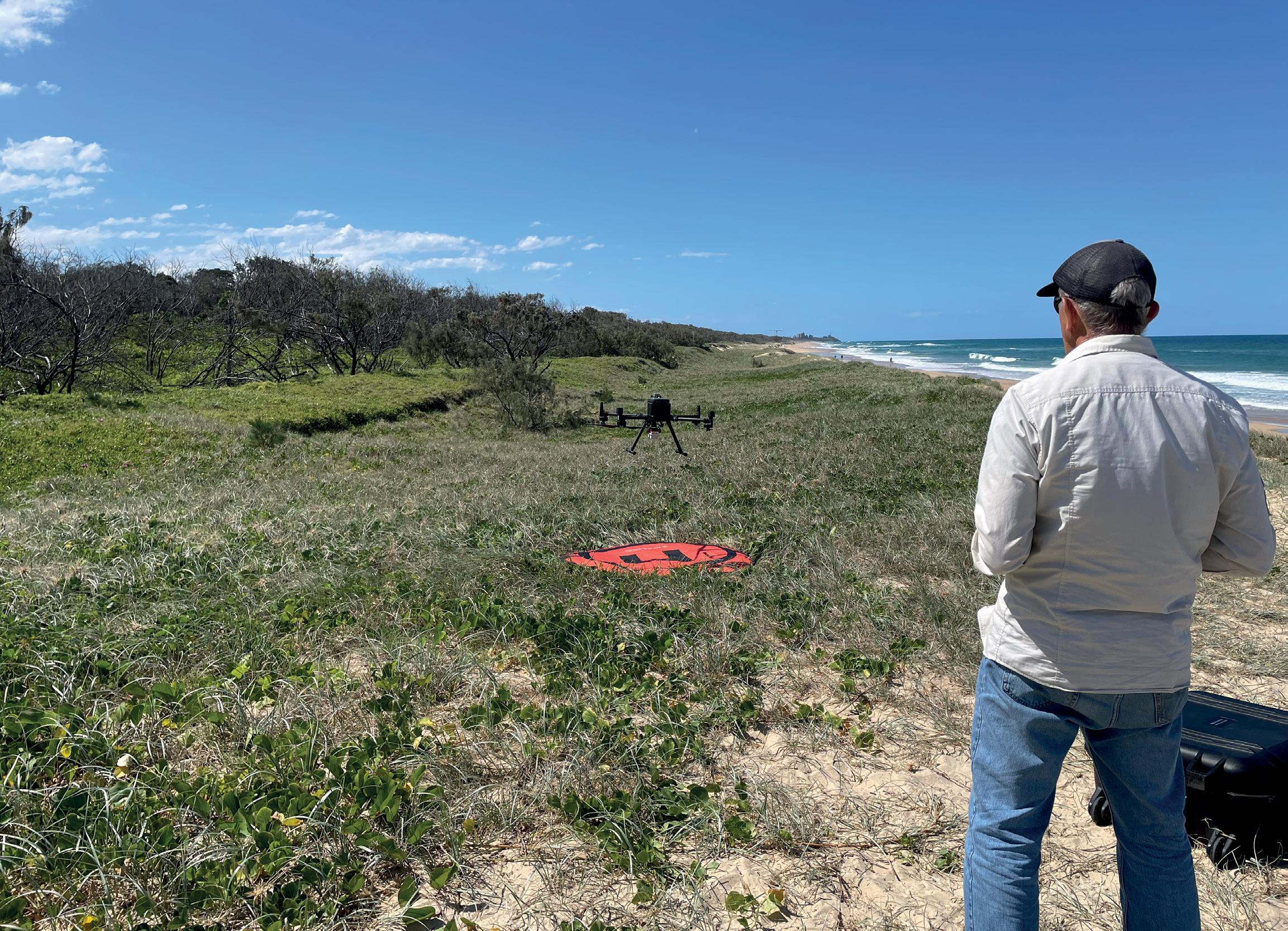
Finally, the last stage, still to be completed, will look at how each mapping technique applies to different environmental situations.
The project is funded by the Sunshine Coast Environment Levy in an effort to
help Council gain a better understanding of how to manage the region’s biodiversity and find a complementary method to assist identification of invasive plant species.
During this trial, Council is specifically targeting the broad-leaf pepper (BLP), which is a weed tree that grows in the bushland foreshore areas along the coast between Point Cartwright and Wurtulla.
Originating from South America, the species (Schinus terebinthifolius) was introduced as an ornamental tree, but has since escaped gardens and spread to coastal areas. The tree is considered dangerous to local flora and fauna because it competes with native plants and contains toxic resins that can affect both humans and animals.
Being a relative of the Rhus tree family and poison ivy, the BLP tree sap can
cause swelling, itching, rashes, sores and breathing problems, and even eating the leaves and berries can cause gastroenteritis in humans.
BLP is a Category 3 restricted invasive plant under the Queensland Biosecurity Act 2014, which means it cannot be distributed or released into the environment. Yet due to its ability to spread quickly, the tree has grown out of control in the area.
Sunshine Coast Council Invasive Weeds Project Officer, Melissa Hele, said the objective of the project is to explore and trial innovative technologies to assist with identification, surveillance and management of BLP.
“BLP has the potential to impact conservation environments by smothering and transforming ecosystems, outcompeting native plants and reducing the ecological values of natural areas,” Ms Hele said.
“Primary spread occurs through seed dispersal by birds and mammals, but they can also reproduce from root suckers and human movement as an ornamental shrub.”
The coastal location between Point Cartwright and Wurtulla was chosen for the trial due to challenging on-ground access. During World War II, the area was used for artillery training but the shells did not explode on impact, which means the soil cannot be disturbed just in case one of these ordinances accidentally explodes.
As a result, it is difficult to dig up the area to remove these invasive plants, but with a targeted approach thanks to detailed mapping, it may be easier for Council to manage weeds in the area.
Ms Hele said that for each of these mapping types, two plant types will be used as proof of concept – the invasive BLP and the native Pandanus tree.
“Pandanus (Pandanus tectorius) will be used as a ‘simple’ plant type as it is easy to identify and occurs in the same coastal strip. BLP will be the second ‘complex’ plant type, being harder to identify amongst our native vegetation,” Ms Hele said.
“This project aims to create detailed mapping of BLP and Pandanus along an approximately 8km stretch of Sunshine Coast foreshore bushland reserves, including Buddina, Warana, Bokarina and Wurtulla.
“We want to create a detailed, high-resolution map of where BLP is in the reserve, and then trial solutions to remove the weed tree. This is being done in addition to the weed management already occurring along this coastal strip.”
The three main mapping types being tested during this trial include:
∞ Orthomosaic imagery (imagery that has been stitched together from a collection of images) and manually classifying these plants within subsets
∞ Identification using AI for both Red Green Blue (RGB), which is standard imagery, and multispectral imagery, which includes additional spectral bands
∞ Ground-truthed sub-sampling to compare the imaging to what is found at the sites
By the end of the trial, Council aims to understand whether AI can successfully
identify BLP and Pandanus to a high level of accuracy. Using the final results from all three mapping techniques, Council can determine the requirements and outputs for each type to better understand the budget, time, and software needed to put this technology into application.
While AI technology is already being used in Australia to identify invasive species, Council are hoping to find new ways to map invasive species to support conservation efforts through high resolution detailed maps that can inform on ground outcomes.
As Council and QUT explore this emerging technology, the use of aerial imagery has already proved useful in surveying the selected trial area for BLP, complementing mapping of the site by ground-truthing.
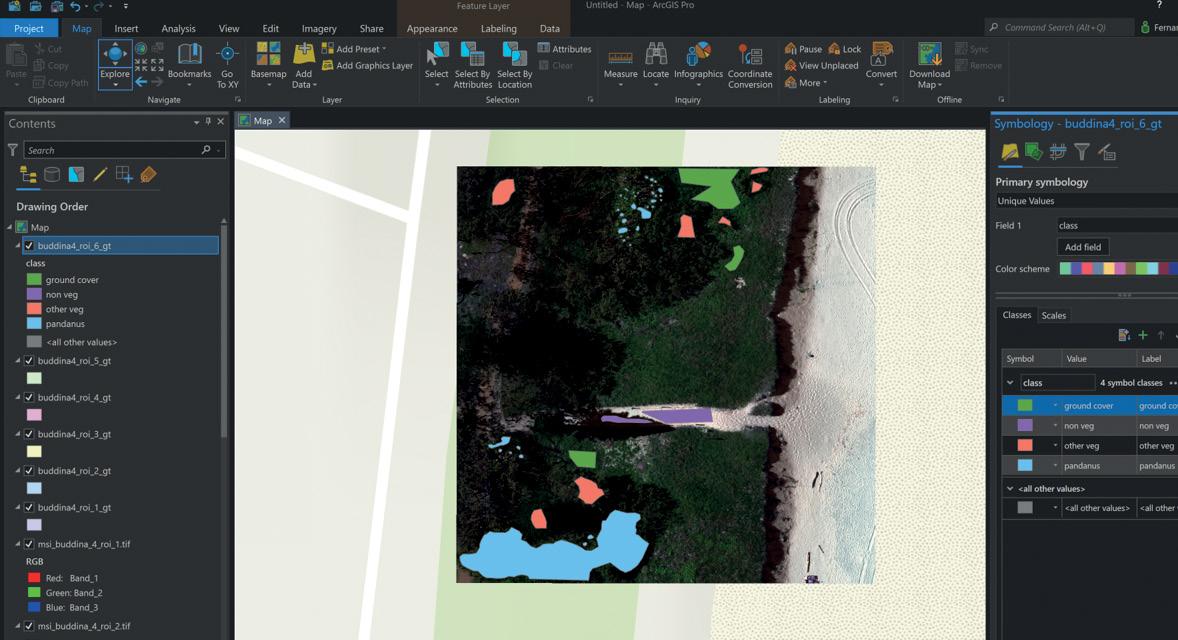
“Nine sites were selected for subsampling ground mapping, which has been completed by experienced ecological restoration contractors, South East Land Repair,” Ms Hele said.
“The points and polygons were mapped for both canopy and sub-canopy for both species. Due to the growth form of BLP, it was easy to identify their trunks to see overall pepper populations.
“Although BLP can be easily identified on the ground by an expert, mapping the broader distribution is challenging. There were difficulties mapping the canopy by ground-truthing due to the growth form and providing access to the sites.
“In many of the foredune areas, native horse-tail she-oaks (Casuarina equisitifolia) obscure the aerial visibility of BLP. Mature pandanus often thrive in conditions of partial shade, so again aerial visibility might be difficult in some areas.”
By combining different mapping types, Council can discover the capabilities and limitations of each technique, which means they can explore these constraints before using the technology on a larger scale. With more information, it may be possible to train the AI to identify more than just BLP and Pandanus.
As of August 2023, all drone imagery has been captured in both RBG and multispectral imagery. QUT have completed labelling orthomosaic imaging for Pandanus, and labelling for BLP is currently being completed.
Even though the trial is still underway, Council and QUT are already learning more about the requirements of using this technology.
“The plant identification is being done by QUT using machine learning for both RGB and multispectral. However, the initial percentage accuracy for machine learning identification is not available yet.
"Labelling of the orthomosaic is complete for Pandanus, taking about 80 hours, with the lowest orthomosaic resolution for the labelling being 4.4cm."
For Council, it was important to match the software to one already approved on Council’s systems to make sure the technology was easy to integrate. The workflow has been developed to work within ArcGIS software, which will allow Council to scale models as more data becomes available.
So far during the trial, Council and QUT have gained a better understanding of mapping and data management software applications. The project will provide for the generation of high-resolution data-sets for training AI detectors.
Council hopes this trial on a small section of coastal dunes can be applied to larger areas in the Sunshine Coast region to tackle more invasive plants. However, many challenges must still be overcome. This includes the correct merging of datasets with different spatial resolutions, and optimising model parameters based on trial and error.
While the Council is still to analyse and release the results, this project demonstrates how experimenting with innovative technology can offer alternative solutions to tackling environmental management. Especially with unique and precarious locations such as the coastline in this trial, part of the experimentation process when using new technology is encountering problems and discovering solutions.
Having been in business for 86 years, Interflow knows a thing or two about longevity. Right now, that requires an all-encompassing sustainability strategy, as Richard McCarthy, Interflow’s Executive General Manager Southern Region, explains.
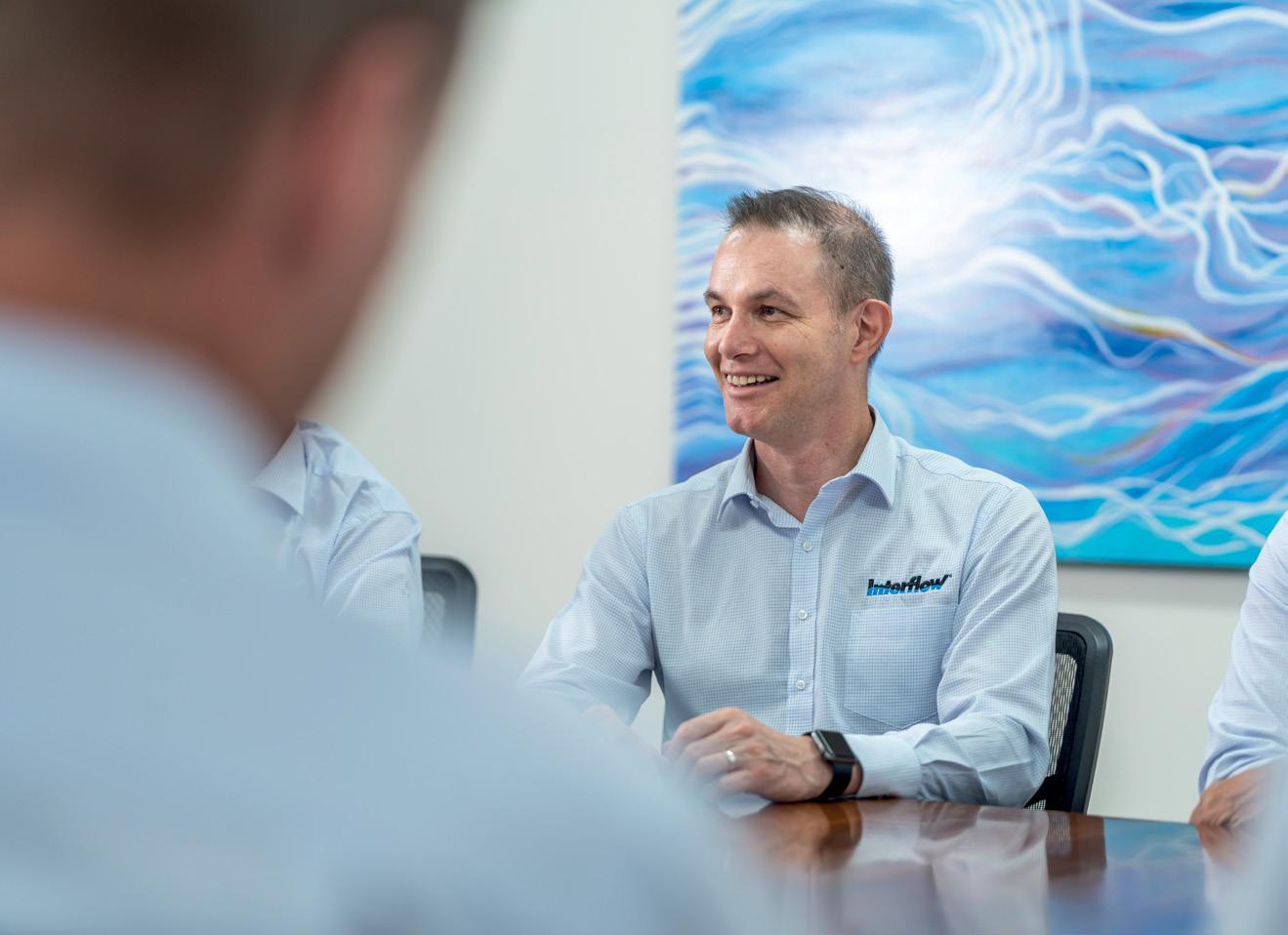
As one of the longest-serving private businesses in Australia, Interflow has always appreciated the necessity of shaping the business around the needs and expectations of current and future generations.

Sometimes that forward-thinking involves innovation and professionalism, and it is always related to good commercial decision making. But today, there’s another vital ingredient in the recipe for success – ESG, or environmental, social and governance – and for many people, this is personal.
“I’ve got three kids, all at university age and older,” Mr McCarthy said.
“Your own kids make you realise it’s not just about your time here. It’s about what you’re leaving behind.”
Interflow’s customers also have expectations of the contractors they bring on board, however Interflow doesn’t want that to be the driver of its core ESG priorities.
“We’re building an ESG strategy because it makes sense in every way,” Mr McCarthy said.
“Our ESG strategy is looking at what we can add in next. What can we do well that will make a real difference to the business, to our customers and to our community?”
A key focus area of Interflow’s ESG strategy is inclusion and diversity, and this is driven by the overwhelming evidence around the phenomenal power of a workforce that has diverse perspectives, backgrounds, experiences and ways of thinking.
“We’re creating an all-encompassing ESG framework for three reasons,” Mr McCarthy said.
“One is that it’s so clearly aligned to Interflow’s purpose. So if we don’t do it, we’re not delivering on our purpose.
“Once we put a framework in place that allowed us to measure our own performance, we recognised that we were doing quite well,” Mr McCarthy said.
“It then becomes about enhancing this across the business.
“We’re taking quite a methodical approach to our path to net-zero.”
“We don’t know exactly what it looks like yet, but we do know we want to do this as a coordinated unit.”
Mr McCarthy said that a clear ESG strategy is not negotiable for the Interflow team, because people want to work for an organisation that aligns to their own values and beliefs.
“What’s important is that we’re constantly developing our ESG strategy,” he said.
“But it’s also important that we’re open and honest about what we can do and where we don’t yet have the answers.
“Our people want their employer to work with purpose. Our community expects and requires our care and attention in everything we do. That’s why we’re putting so much effort into it, right now.”







We’re Creating
Future of Water for climate, communities and our kids
“We’re building an ESG strategy because it makes sense in every way as a business and community member. We’re doing it because it’s the right thing for us to do.”
– Richard McCarthy, Interflow
As cities grow, it’s the responsibility of the local government to meet the needs of changing populations and environments, but this can only be achieved with sustainable and innovative solutions. Through collaboration with local businesses, universities, and social enterprises, the City of Casey is striving to test pathways for a more sustainable future with its Circular Economy Living Lab. Here Nicky Stecca, Innovation Officer at the City of Casey, outlines how community collaboration is the key to net-zero success.
The bustling City of Casey, in Victoria, is one of Australia's most rapidly expanding and diverse communities, with its population anticipated to surge to over 616,000 residents by 2041, bringing with it an undeniable call to action.

As growth unfolds, the challenge lies not merely in accommodating these changes, but in doing so responsibly, embracing our role in protecting the environment and steering our economy onto a sustainable path.
Casey's commitment to these goals is strongly echoed in the City of Casey Council Plan and Climate Action Plan.
Anchored in the principles of a circular economy, we aim to minimise waste and strive towards net-zero emissions within our municipality by 2040.
The pursuit of such goals is shared by many Local Government Areas, but the path is often complex and multifaceted. Limited resources, lack of in-house expertise, and an urgent need for effective solutions can pose significant challenges. The key, therefore, lies in collaboration with external organisations—those that bring the necessary expertise, technology, and innovative spirit to the table.
At the heart of Casey's efforts to create a sustainable future lies the Circular Economy Living Lab. Orchestrated by our Smart City and Innovation team, this initiative fosters the successful cultivation of partnerships with start-ups, universities, businesses, and social enterprises, creating a testing ground for innovative solutions through a co-funding model.
Selected through a competitive grant process, seven trailblazing projects have tackled areas identified by our community as high priority to address for a local circular economy – food waste, construction and demolition waste, and efficient use and maintenance of existing buildings.
To address food waste, for instance, we've worked with organisations like OzHarvest and Reground, leading the charge in food waste education and environment regeneration through organic waste.
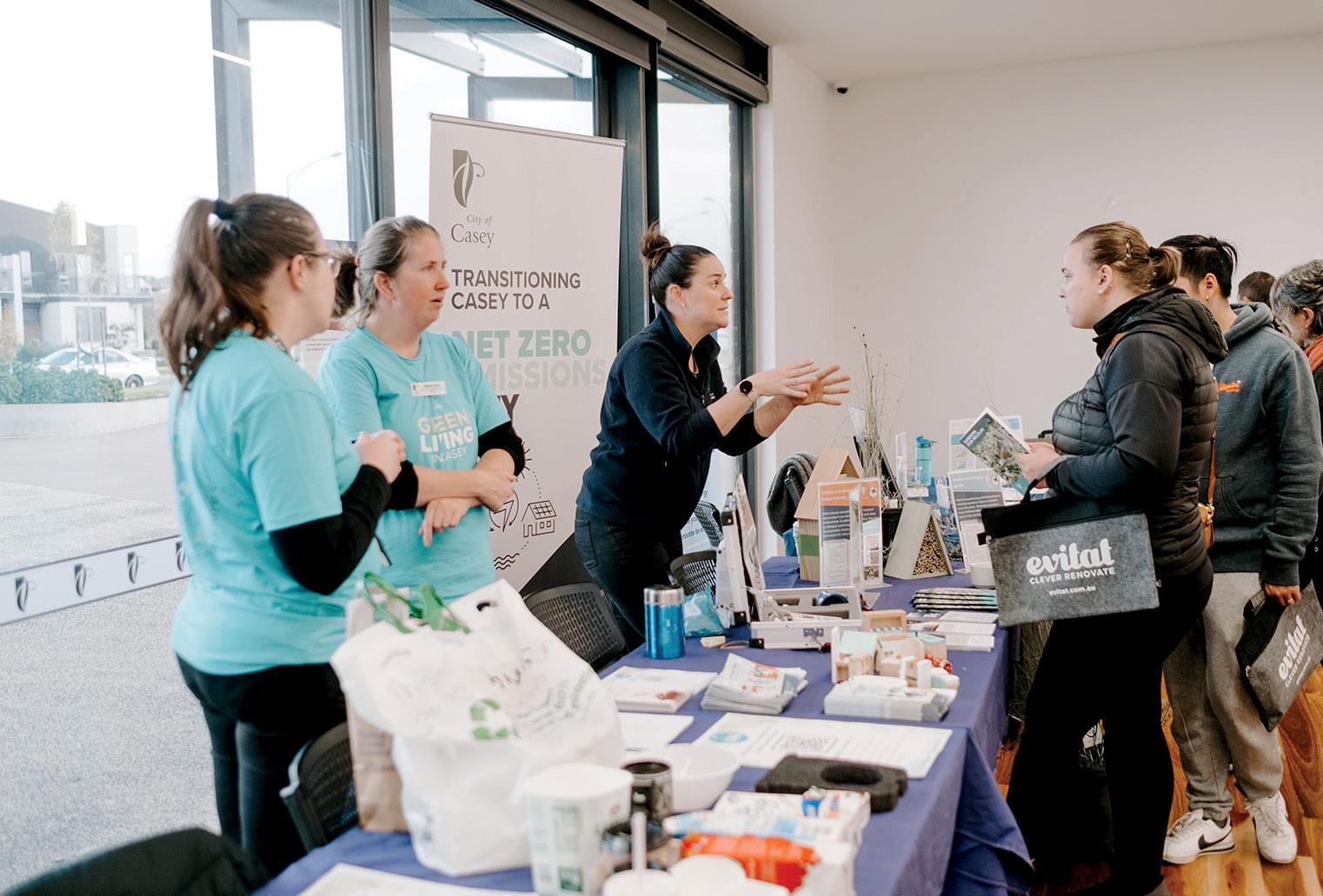
OzHarvest is a food-rescue organisation that diverts food from
supermarkets, cafés and manufacturers to prevent waste and improve food security in Australia. Partnering with the City of Casey, OzHarvest successfully delivered the Use it Up campaign with 130 households, demonstrating a reduction in food waste of over 40 per cent.
Reground is a Melbourne-based social enterprise that collects coffee grounds from over 300 businesses around Melbourne and Geelong and has expanded to the City of Casey thanks to the Living Lab. Reground collected coffee grounds from eight cafes in Casey, donating them to community gardens and residents to use as fertiliser. The café at our office, Bunjil Place, participated in the program and in two months managed to repurpose 720kg of ground coffee and chaff into valuable compost and soil, preventing 1368kg of greenhouse gas emissions.
Other projects include working with Evitat, FTD Circular, Rosella Street and Activ Group, to help households reduce waste and encourage circular practices in local construction.
Evitat helps home-owners to make sustainable choices when renovating their homes. Its project involves working with renovators and providing guides for residents in the City of Casey. The collaboration with this organisation resulted in increased awareness and support for more energy-efficient homes among 150 local households,
FTD Circular aims to reuse and recycle furnishings and fittings from a closing down commercial facility to new facilities, schools, businesses and community centres. The organisation supported City Presentation in the
renovation of local community hubs to enhance the rate of retiring assets reused, donated, repaired or recycled through a digital assets registration platform. Over 58 per cent of registered assets were diverted from landfill in our most successful renovation.
Rosella Street has created a hub on their website to connect residents and businesses in the City of Casey to resell goods and materials instead of sending them to landfill. During the collaboration with City of Casey they set up a marketplace where 41 community members and local businesses started to list items for renting, sharing, and selling. Proceeds from the sales go towards planting trees in the Northern Territory for Indigenous communities.
Activ Group is a company specialised in reverse logistics, having established collection and diversion of e-waste and other harmful waste over the past 20 years. Their collaboration with Council and local developer Brown Property Group led to the establishment of a circular economy hub for construction and demolition waste in a local construction site, currently testing diversion of construction waste from landfill.
With these diverse projects nearing the end of their trial stages, we've gleaned invaluable insights into scaling up and perpetuating successful circular economy initiatives. Each project has contributed practical results, from tangible waste reduction, to recommendations for the implementation of council policies, fueling behavioural changes within the community and local businesses.
The Living Lab approach underlines the potential of partnerships in addressing complex environmental and societal challenges. By fostering active engagement with citizens, businesses, schools, and community groups, we've fine-tuned solutions to align with the unique needs of our community.
The collaboration with academia, the private sector, and grassroots organisations has not only enriched local government practices but also built a more resilient, sustainable, and engaged community. The lessons learned from Casey's Living Lab initiative can provide a roadmap for other councils seeking to navigate the path to a circular economy and a more sustainable future.
Communities are becoming increasingly aware of the core principles of circular economies, and are more interested in understanding the ways their local council is contributing positively. Here, we take a closer look at the ways local governments can build circular principles into their operations.
The Australian Department of Climate Change, Energy, the Environment and Water define circular economy as "a way of achieving sustainable consumption and production, as well as nature positive outcomes". It is a shift away from the prevailing linear economy, often referred to as a 'take-make-waste' economy, to one which decouples economic activity from the consumption of finite resources. Driving the transition from a linear to a circular economy are no shortage of global and regionally focused think-tanks, thought-leaders and not-for-profits. Their work is intentional, and together they supply many engaging entry points, stemming from the widely recognised and accepted core principles of a circular economy:
∞ To design out and eliminate waste and pollution
∞ To keep products and materials in use
∞ To regenerate natural systems
To effectively transition to a circular economy, a global movement requires clear ideals. Key elements include collaboration across society, research into global trends, support for innovation, and a supportive socio-political environment.
Here are some suggestions to guide your council's shift to a circular economy.
Engaging a circular economy expert to undertake a review of your Council Plan and key council policies and strategies is a meaningful way to create an enabling political environment for staff and a social licence to explore this path with the broader community.
A review could entail a horizon scan of current and predicted future trends and current international, national and statebased policy, desktop analysis of council documentation, recommendations for amendments that are aligned to regional and global expectations, and a timeline for implementation.
There are hundreds, if not thousands, of examples of dedicated businesses and community groups who use their time to drive the local transition from linear economies to circular ones. Some examples of these can be seen in Sustainability Victoria’s Circular Economy Communities Fund. Finding out what your local businesses and community groups are doing, and then seeking to understand how you can best support them to scale up or replicate, can be both empowering and affirming. To borrow TED’s mission statement, work to “spread ideas, foster community and create impact”.
With so many organisations working in the circular economy space, there can be overlap, but there are also areas that require someone to take the lead. As you understand your local area better than anyone else, with a bit of investigation, you will be able to find these gaps.
This could look like:
∞ Building a partnership with a local industry, such as a health clinic, to focus on hospital plastic, a material that is stubbornly linear
∞ Using your purchasing power to buy upcycled, reused or recycled products, and in doing so, supporting local manufacturers at the same time
∞ Working with your contractors and to see how recycled materials can be embedded into, for example, construction of new roads and footpaths
Finally, as transitioning to a circular economy is best done in collaboration and partnership with others, perhaps the first step from here is to ask, ‘Who can I reach out to, to take my first, or next, step?’.
solutions
As a specialist provider of engineering and environmental services, Tonkin + Taylor brings your project ambitions to life.

We understand the unique challenges that Councils face, and we offer a variety of resources and services that can help you address your challenges.
We are committed to supporting the communities that we serve. We believe that everyone deserves to live in a healthy and sustainable environment, and we are proud to play a role in making that happen.
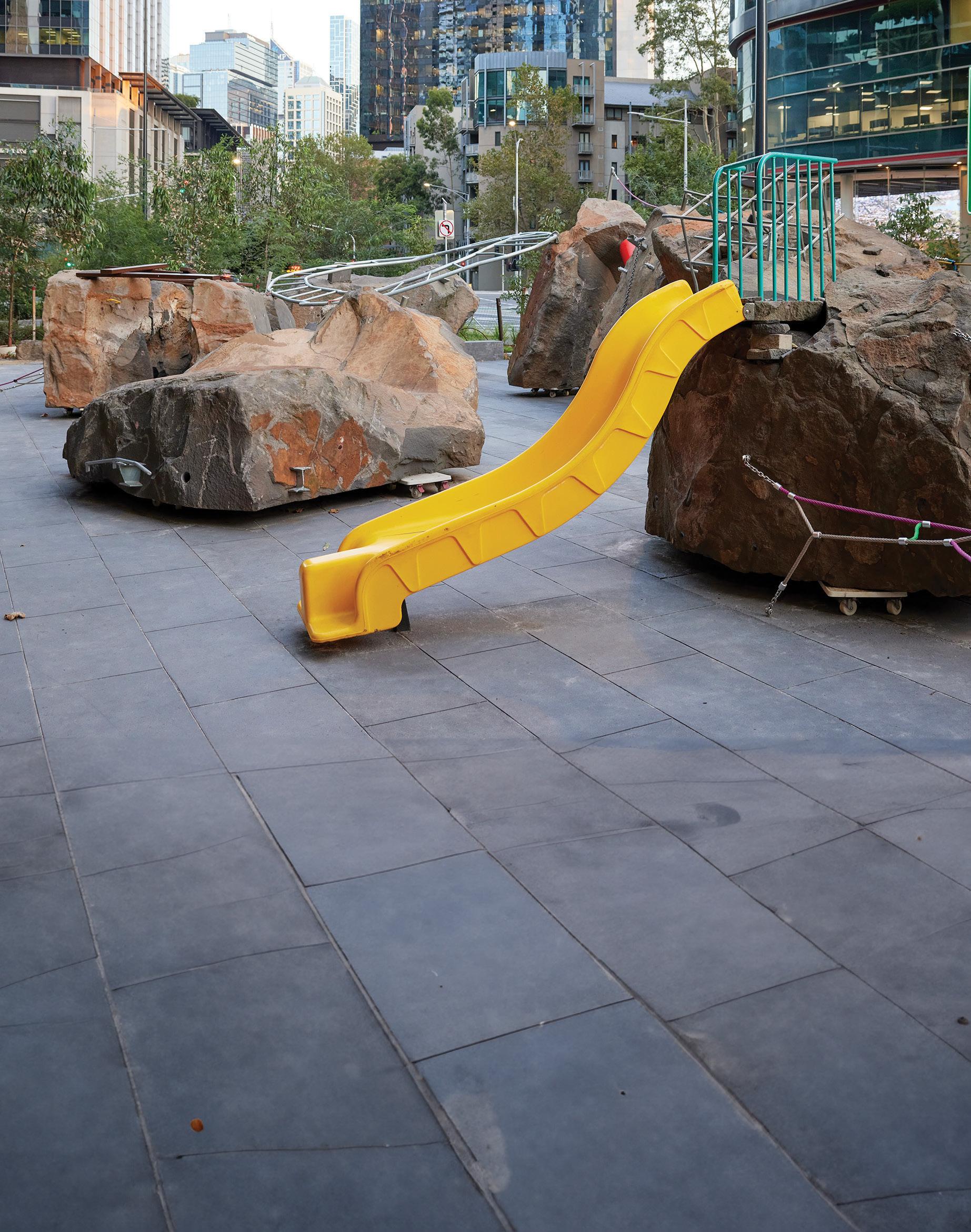
Together we create and sustain a better world.
Find out more at...
www.tonkintaylor.com.au

Aleading environmental custodian, the City of Burnside’s goal is to continue to develop a prosperous community that is healthy, safe, connected and allows people and nature to live harmoniously.
As part of the Burnside Environmental Sustainability Strategy, and with the goal to become carbon neutral by 2030, Council plans to maximise green programs including the development and expansion of the city’s urban forest – currently comprising over 42,700 trees – including the planting of approximately 1,000 new trees every year.
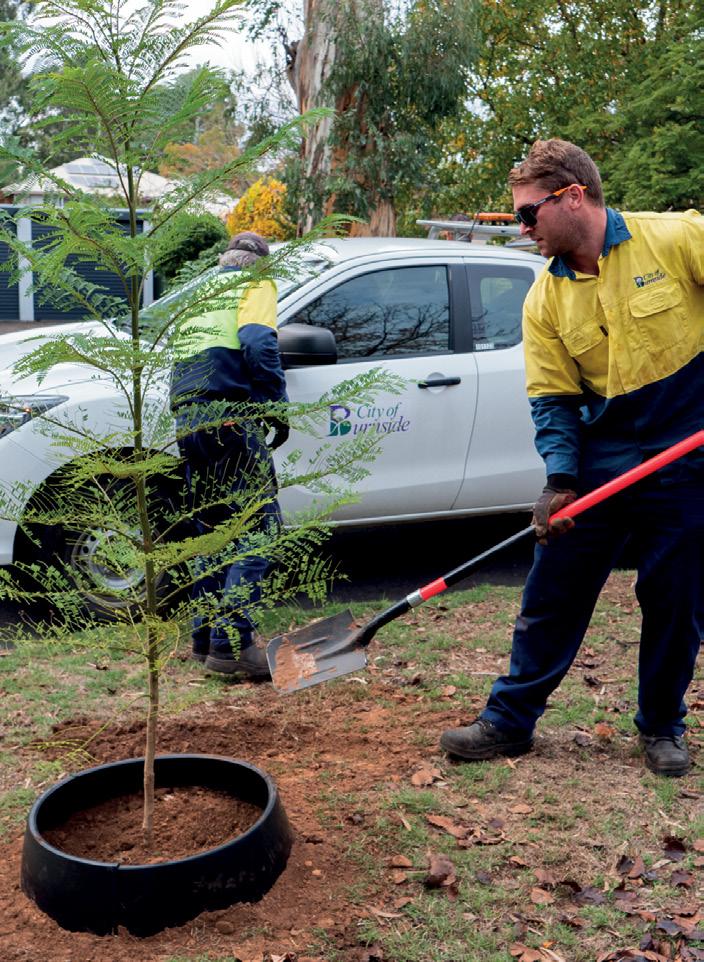

A fully mapped and catalogued ecosystem, Burnside’s Urban Forest can be explored in-depth online with an interactive breakdown of parklands, reserves and street trees.
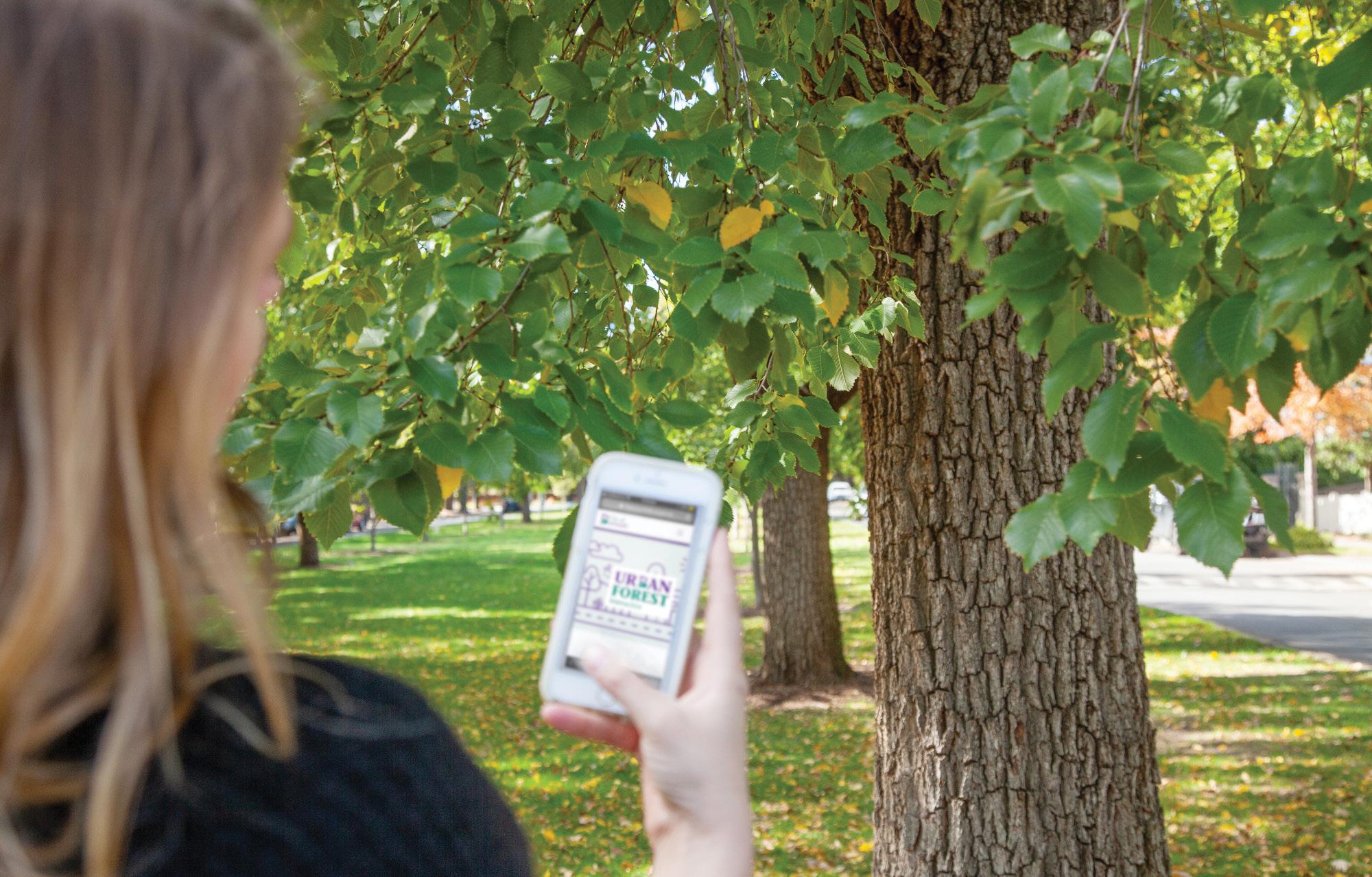
This project was one of the first of its kind to be developed in Australia and provides exclusive insight into industryleading environmental commitments by the City of Burnside.
With environmental, health and aesthetic benefits, the urban forest provides many services to those who live and work within the City of
Burnside and will assist in safeguarding the community against the effects of climate change, including regulating temperature, improving air quality, supporting biodiversity and enhancing both physical and mental well-being of residents and community members.
As a three-time Tree City of the World, the City of Burnside understands the pivotal role local government plays in leading the way towards a greener future for the community, working hard to protect urban greenery for, and from, current and future generations.
In line with Council's efforts to preserve and grow the urban forest, residents of the City of Burnside play a critical role in ensuring the advancement of environmental goals through the protection of trees and vegetation on public land – a role more urgent than ever following a recent spate of incidents in which numerous mature trees were illegally felled or heavily damaged by unknown individuals.
These incidents follow a landmark first for the City of Burnside, which after many years of court proceedings was able to reach a successful prosecution at Adelaide Magistrates Court on 21 July 2023 for the illegal removal of a street tree.
In April 2021 a mature seven-year-old Golden Rain tree was witnessed being illegally removed. After discovering that the removal was not approved by Council, a local resident took photographs and notified the City of Burnside of the incident. Council investigated and with enough evidence
to prosecute, issued a summons for the matter to be heard in court.
After a two-year case, City of Burnside CEO, Chris Cowley, said he was happy with the outcome, which was successful largely because of a supportive resident and Council’s passionate Urban Forest Team.

“It’s been a long and protracted case, taking a year to investigate and a further year in the courts,” Mr Cowley said.
“It would never have been successful without the quick thinking of the resident who witnessed the incident and reported it to Council.
“I hope that this example highlights the seriousness of the issue and the commitment from Council to take strong action to safeguard the urban forest,” Mr Cowley said.
Senior Urban Forestry Officer, Chris Hawkins, said that this was a rare win in the battle to preserve the urban forest for future generations.
“I’ve worked as an arborist for ten years and this is the first successful street tree prosecution that I know of,” Mr Hawkins said.
City of Burnside Technical Officer Conservation and Land Management, Dr Mark Ellis, said the impact on local ecosystems from illegal removals like this one ran extremely deep.
“Many of our parks and reserves, especially in the hills face area, contain remnants of the original indigenous vegetation of the area prior to European settlement. These areas are priceless and are managed for the wide range of flora and fauna they support,” Dr Ellis said.
“In our rapidly changing climate it is imperative that we do everything we can to support our local ecosystems, if we lose elements of our urban forest, we also lose the species that depend on those trees.”

Mr Cowley asked the community to help Council defend the City of Burnside’s urban forest by reporting any tree-damaging activity and even gathering evidence.
“We need everyone to know that this illegal behaviour is not acceptable in our community,’ Mr Cowley said.
“Photographs and statements are what can really change the outcome.”
As the maximum punishment in South Australia for this illegal activity, the courts can impose a $5000 fine and record a criminal conviction.
Unfortunately, even following the prosecution of this one offender, Council continues to identify numerous acts of unknown individuals illegally damaging and/or removing sections of the urban forest.
In each edition of Council Magazine we choose one local government from across Australia to shine a spotlight on. This edition, we focus on the Shire of Gunnedah in north-west New South Wales and their determination to address increasing crime in regional areas.


Gunnedah Shire, located in the scenic area that inspired My Country poet Dorothea Mackellar, has a growing community of more than 13,000 people. It covers nearly 5,000km2 of land and is home to some of the world’s best agriculture, as well as an expanding mining sector and a range of businesses that support the economy.
But as crime rates in regional New South Wales increase, Gunnedah Shire Council has taken the lead to help prevent crime and protect communities.
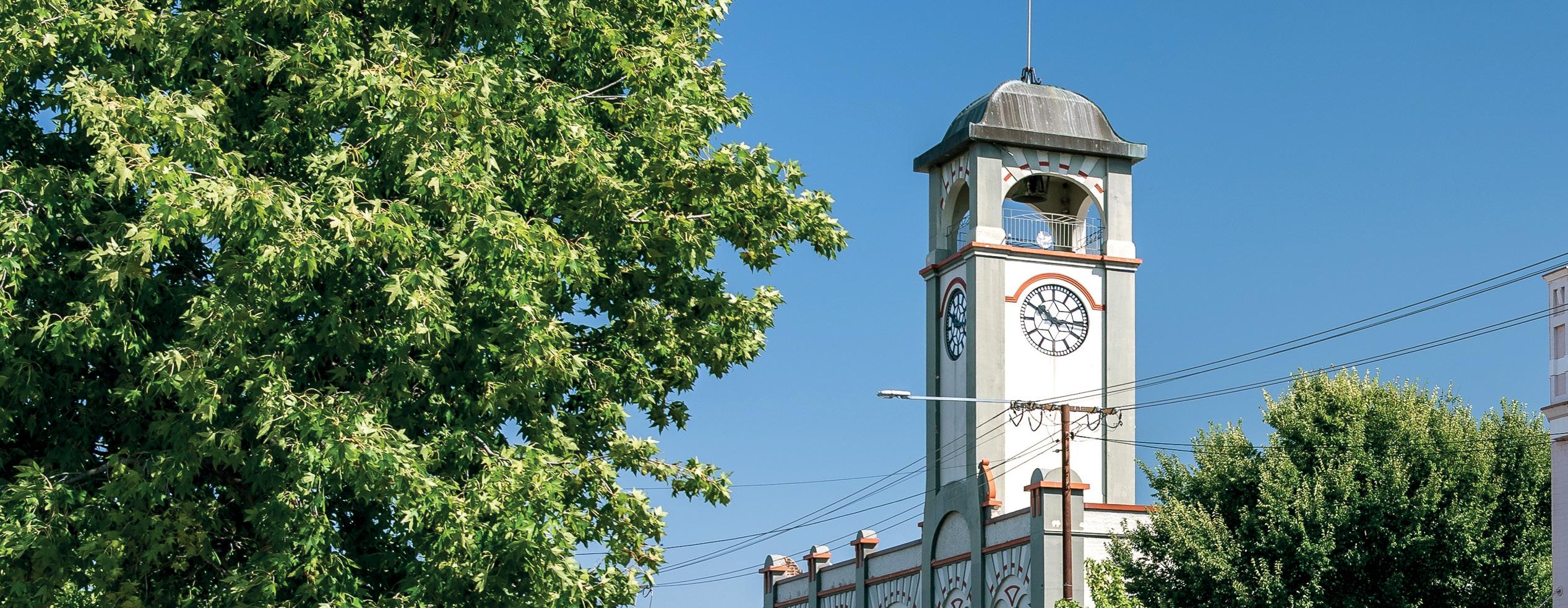
Gunnedah Shire Council, through its Crime Prevention and Community Safety Conference Working Group, will hold a national conference in November to bring together speakers and industry experts to discuss emerging crime trends and share the latest developments and approaches in resolving crime and improving safety across urban and regional communities.
More than 20 years ago, Gunnedah Shire Councillors and staff recognised the strength in working with the whole community to enhance community safety.
Council facilitated the Gunnedah Crime Prevention Working Group to act as an advisory group to address the core issues of community safety, and to help put in place initiatives to make a difference.
Still in operation today, the group has included police, health services, Community Corrections, Police Citizens Youth Club, First Nations representatives, youth representatives, community representatives and the Gunnedah & District Chamber of Commerce and Industry.
“This group wasn’t formed to address a crime problem,” Working Group Chair Councillor Colleen Fuller said.
“It is a practical framework to promote crime prevention, looking at it from a whole of community perspective to come up with initiatives that work.
“Crime impacts every community and each part of every community – that’s why it’s so important to involve a range of people with different experiences and ideas.”
Over the years, the working group has helped deliver initiatives that included lobbying state and federal governments for enhancements to community safety programs, policy and law, in particular domestic and family violence.
The group also supported the implementation of the Gunny Get Your Home Secure program to assist with home security and following consultation with the community, and together with the Gunnedah and Districts Liquor Accord, was behind the Gunny Get You Home Safe program to address drink driving.
In 2019, the group launched a proactive and highly visible anti-domestic violence and anti-bullying campaign with street banners throughout the CBD and “no violence” and “no bullying” messages installed on four of Council’s waste and water truck fleet.
As well as having ongoing input into the implementation of alcohol-free zones and alcohol prohibited areas in Gunnedah Shire, the group was instrumental in providing advice to numerous Council grant applications that has resulted in the installation of over 100 CCTV cameras across the Gunnedah CBD. Council makes the footage available to police to assist with investigations.
But even with the community working together, Gunnedah Shire has not dodged the recent increase in regional crime.
The latest NSW Bureau of Crime Statistics and Research (BOCSAR) statement in March this year also noted across the state, domestic violence was up three per cent over a five-year period and sexual assault had increased by 6.8 per cent. In the two years to March 2023, motor vehicle theft in New South Wales was up by 21.3 per cent, and break and enters were up by 8.6 per cent.
BOCSAR reports the increase in motor vehicle theft has been “particularly large” in regional New South Wales. In the New England and North-West of New South Wales, where Gunnedah is located, the number of cars stolen in the year to March 2023 had risen by 67 per cent.
“Like any other regional area, we are facing challenging times with increasing crime,” Cr Fuller said.
“There is no immediate answer, but by listening and sharing knowledge, we can only get stronger in our approach to crime.
“The Conference goes beyond dealing with the theft of a car – it is a way for people across a huge range of professions, services and interests to get together and help build a safer state and a safer country.”
Conference Coordinator, Debra Hilton, said the Crime Prevention and Community Safety Conference Working Group, set for November 23-24, will be headlined by 2021 Australian of the Year Grace Tame, who has turned her own traumatic experience into advocacy. She is committed to eradicating sexual abuse in Australia and supporting survivors of child sexual abuse.
Other speakers include 2020 Young Australian of the Year finalist Hunter Johnson, New South Wales Minister for Police and Counter Terrorism, Yasmin Catley, social researcher and futurist Mark McCrindle, community safety design specialist John Maynard, and asset based community development consultant and author Alan Blackshaw.
“We have attracted an exciting line-up of speakers from within New South Wales and interstate, who can share their experiences and their knowledge with those who attend,” Ms Hilton said.



“This is a really exciting opportunity for local government and practitioners in community safety and crime prevention.
“Our program includes police, data analysts, cyber security experts, grass roots services, and social and youth justice advocates. We really want to give delegates an opportunity to take away practical solutions that they can perhaps implement in their own community.
“Innovation and collaboration are part of Gunnedah Shire’s ethos, and it is also a great way to approach the issues that are facing our communities.”

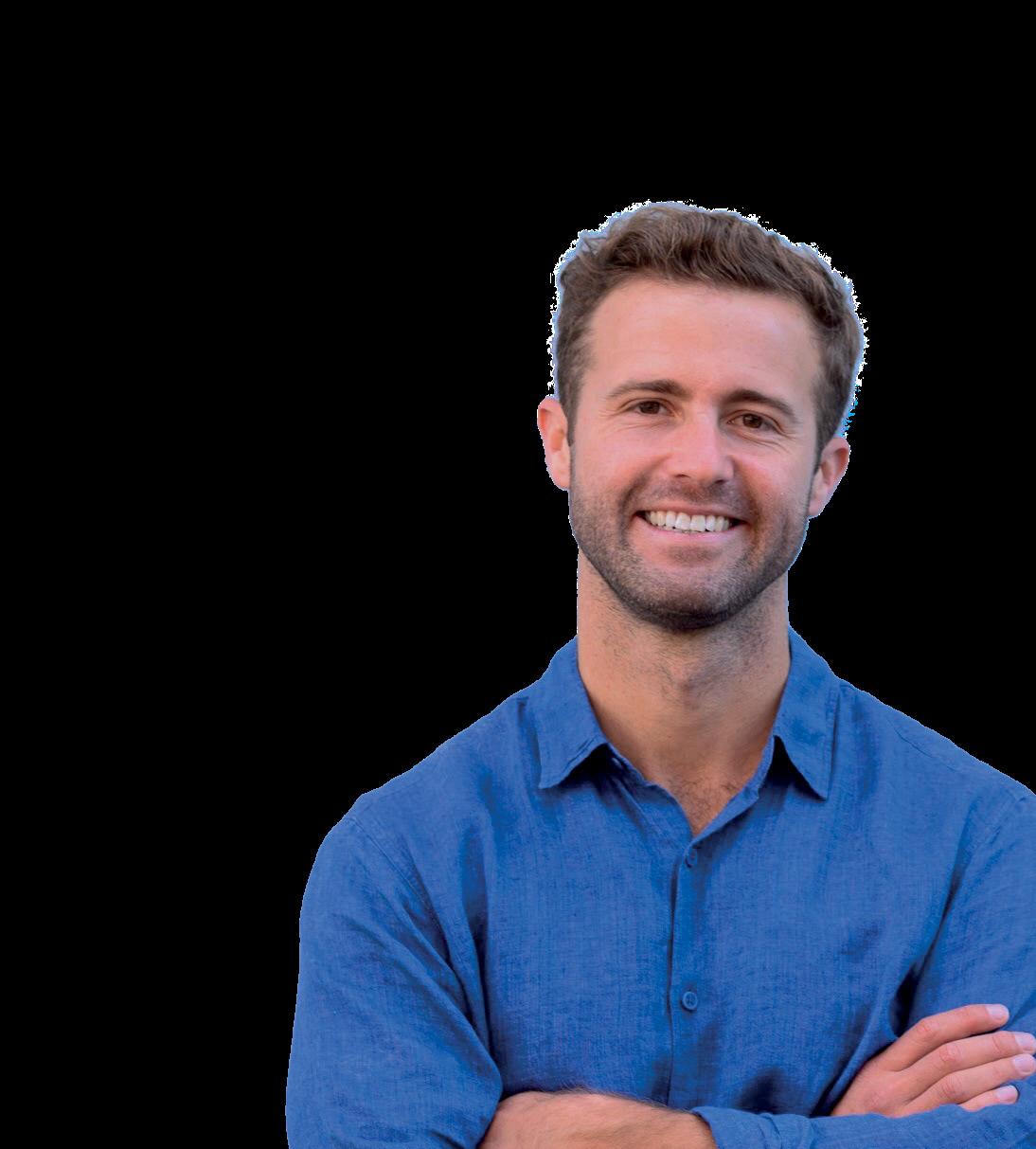
While a conference of this size and scope is demanding, Gunnedah Shire Mayor, Jamie Chaffey, says Gunnedah Shire is ready to collaborate.
“We have a strong community who are not scared of leading the way,” Cr Chaffey said.
“A group of only a few dedicated people started AgQuip 50 years ago, and that has gone on to become one of the biggest field day events in the Southern Hemisphere. Our community is innovative and passionate about what they believe in.
“Our residents – and residents of every other community across regional Australia – deserve to feel safe. With this conference, we are working towards recognising common challenges – and hearing about some of the ideas that might well make a difference to our own regions and our own lives.
“We are really proud to be hosting the Gunnedah Crime Prevention and Community Safety Conference and urge anyone who works in this space or wants to make a difference to attend.”




